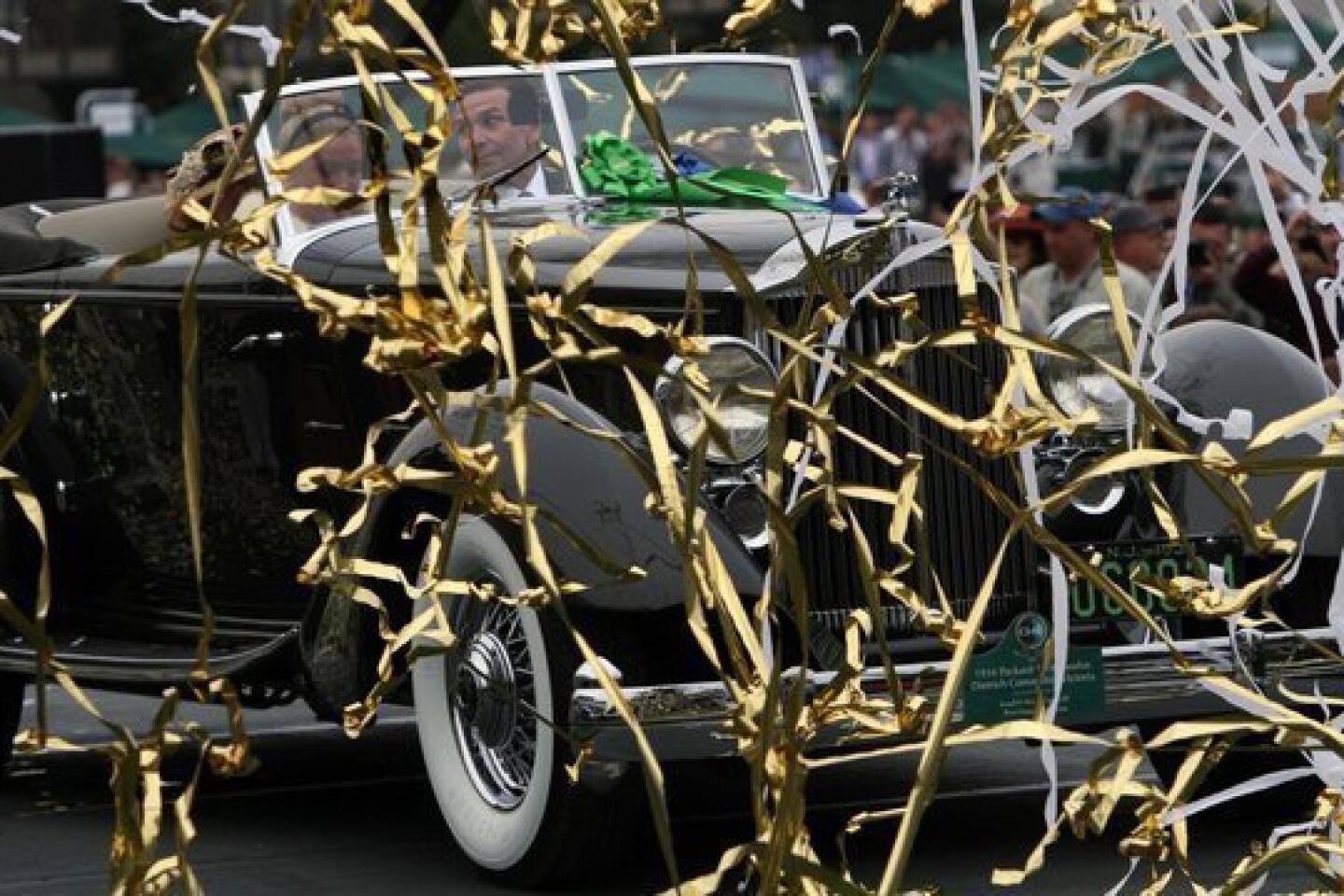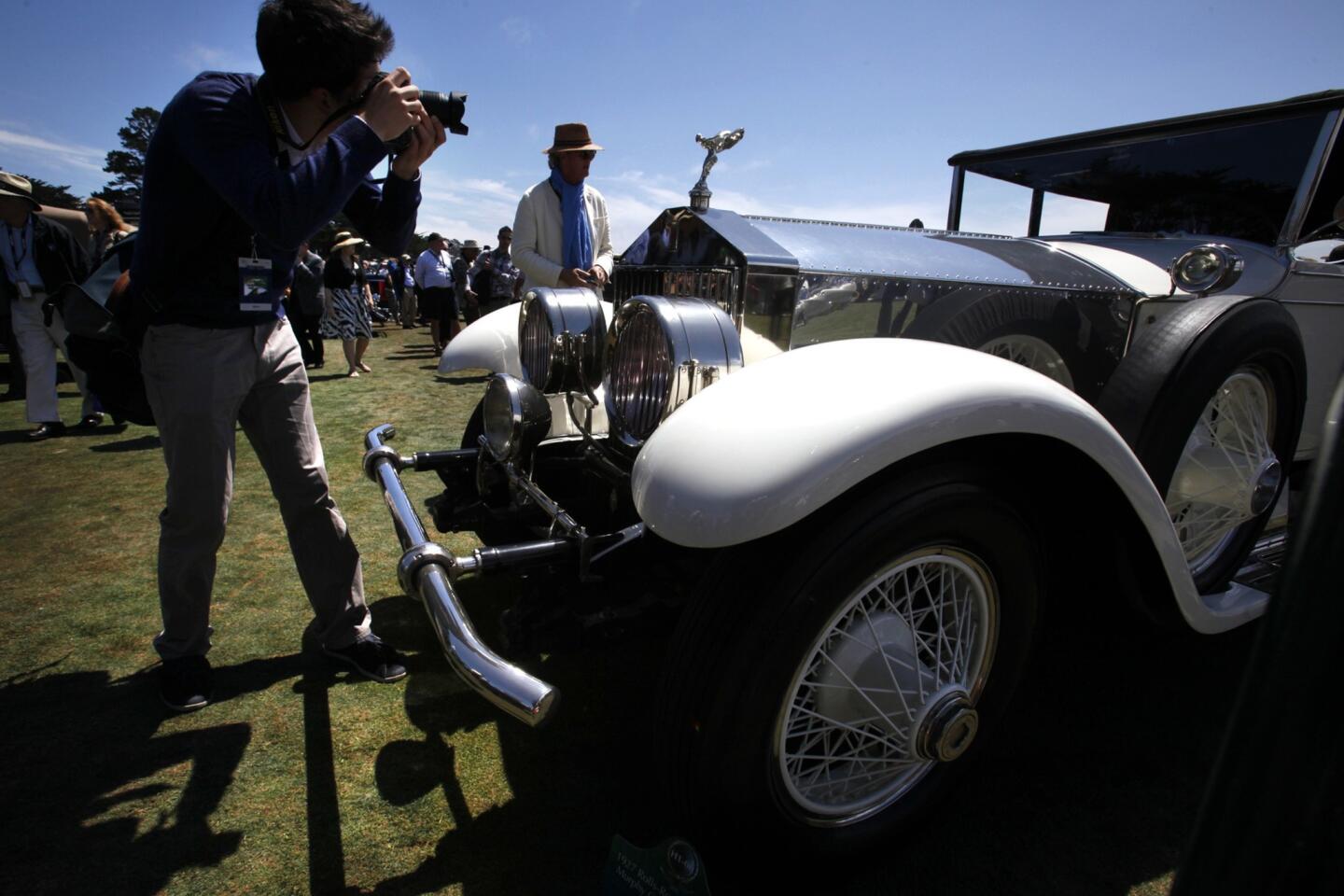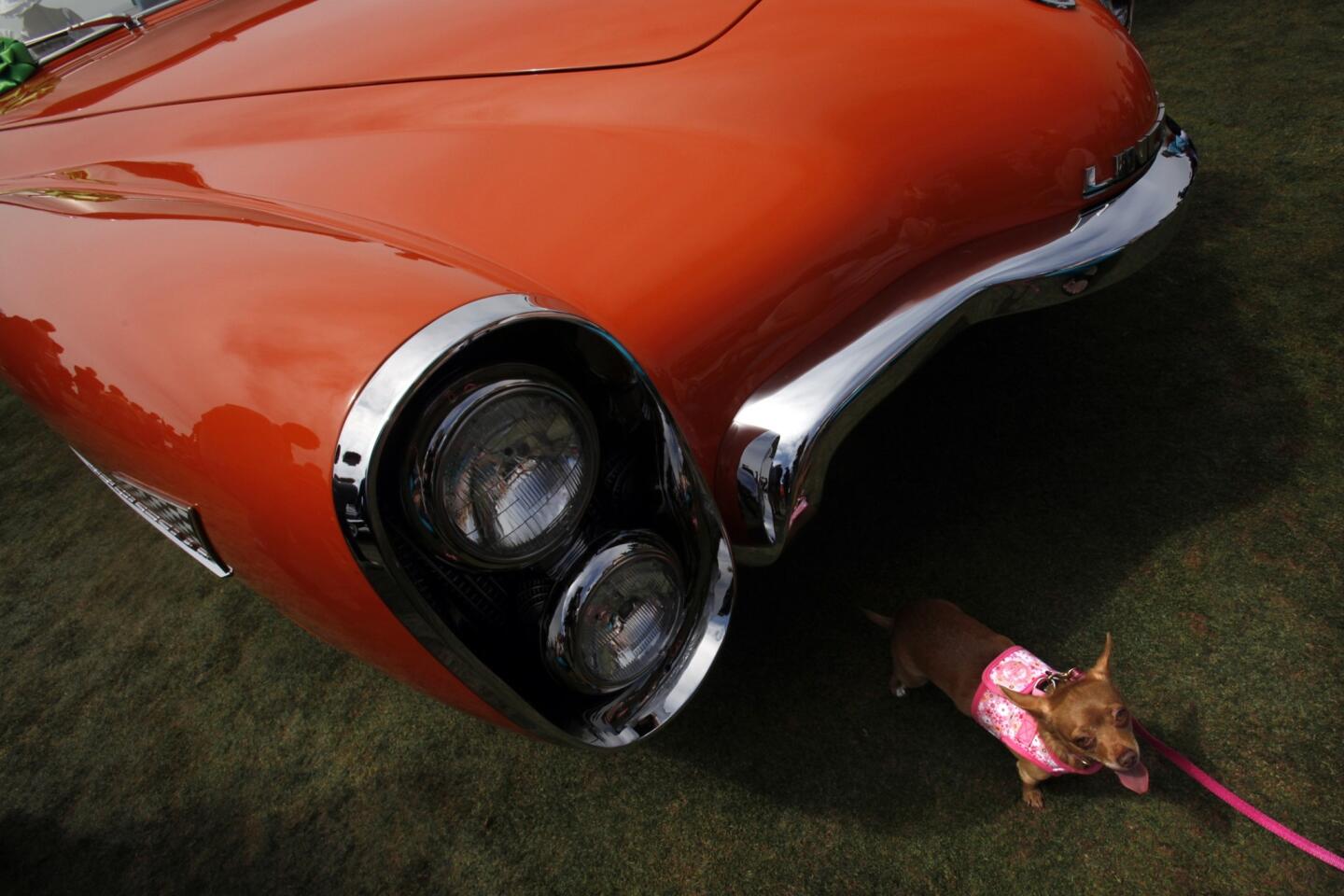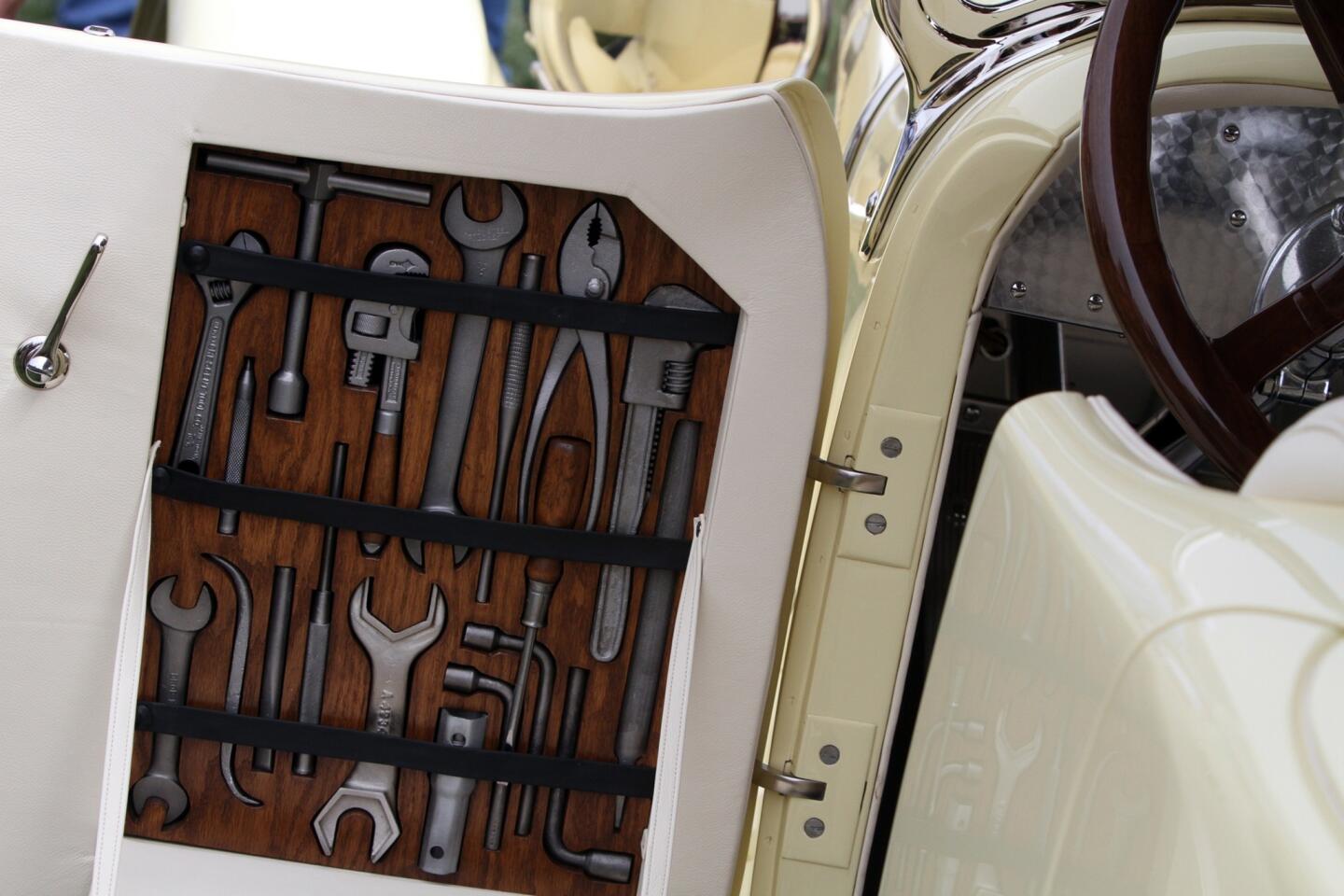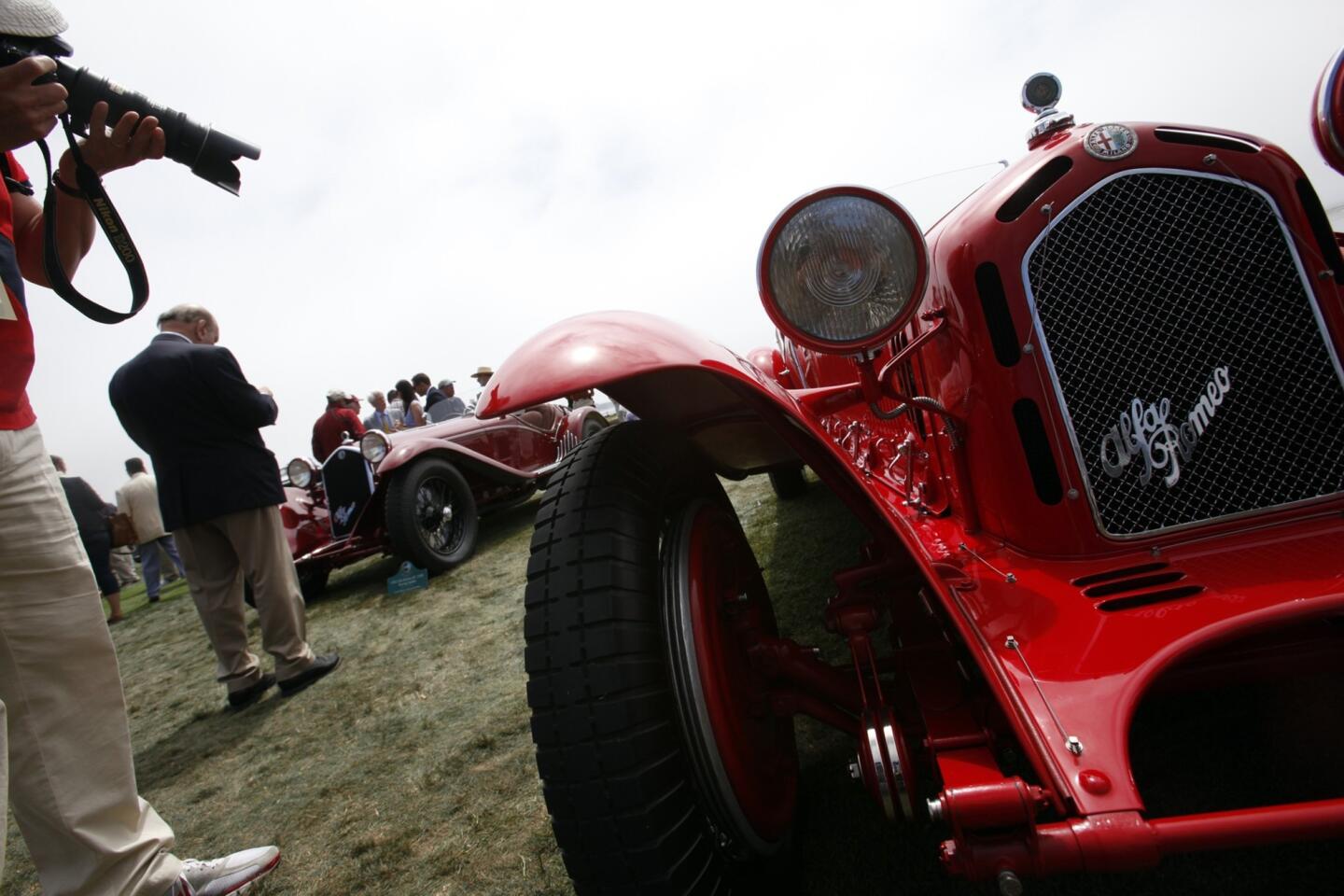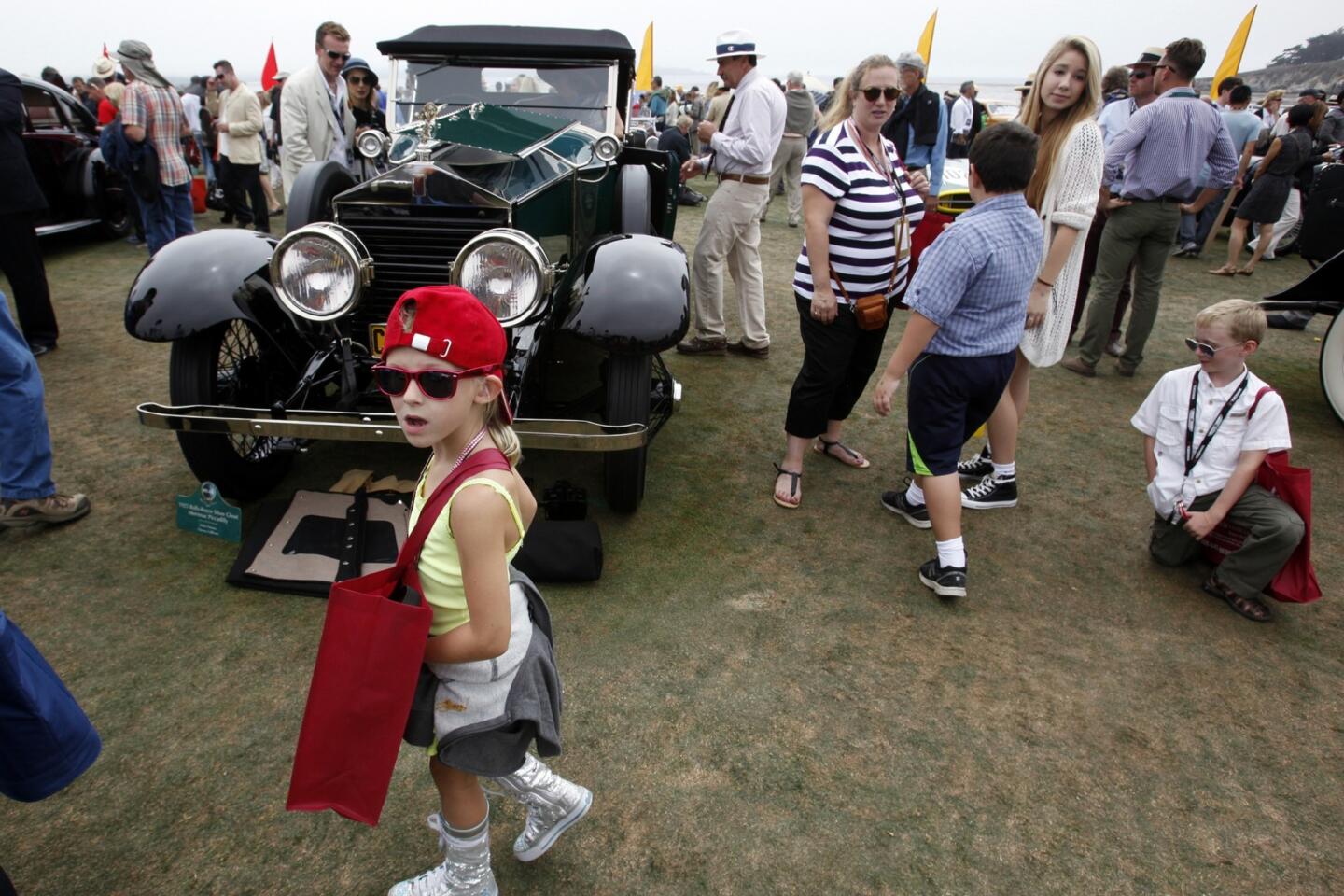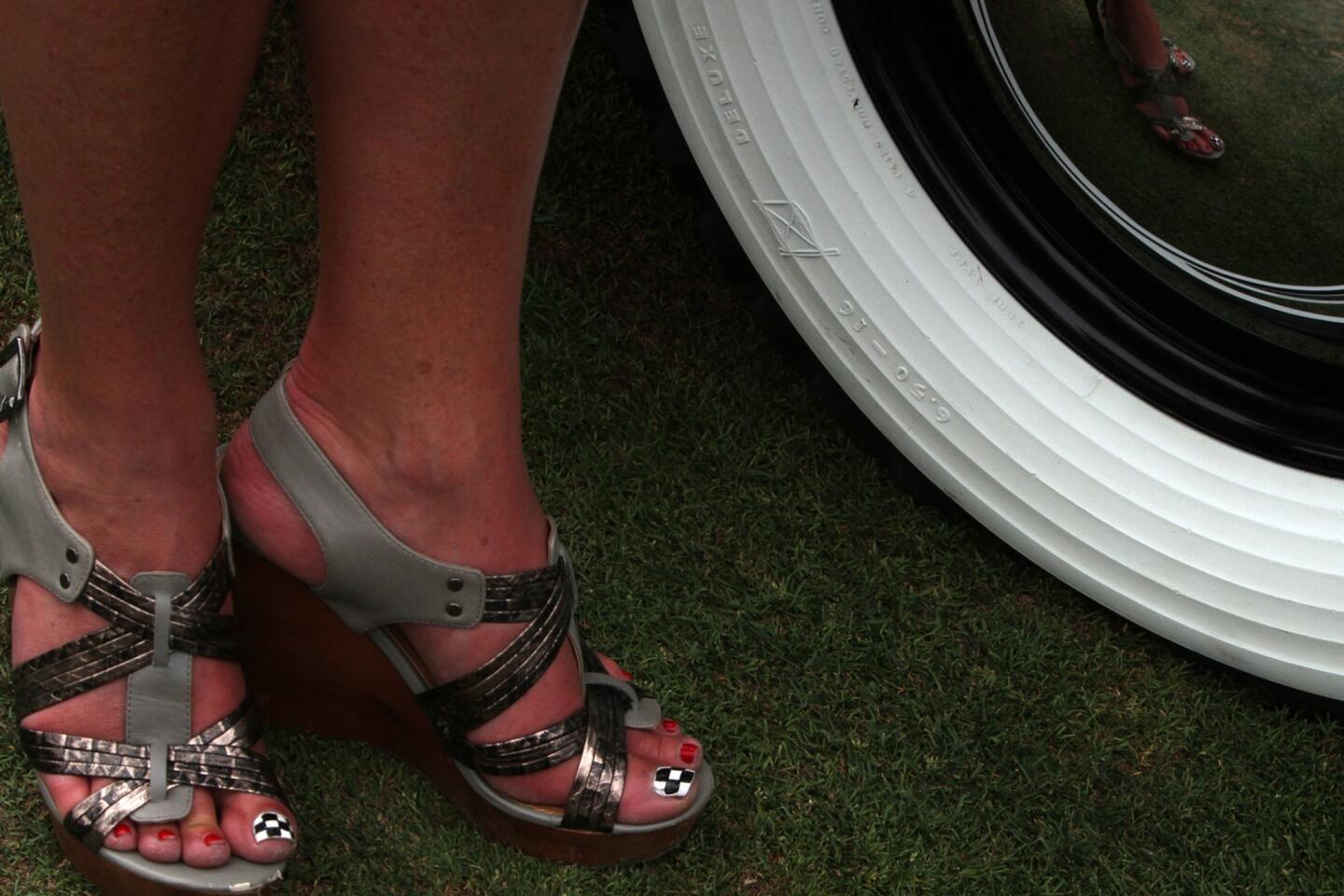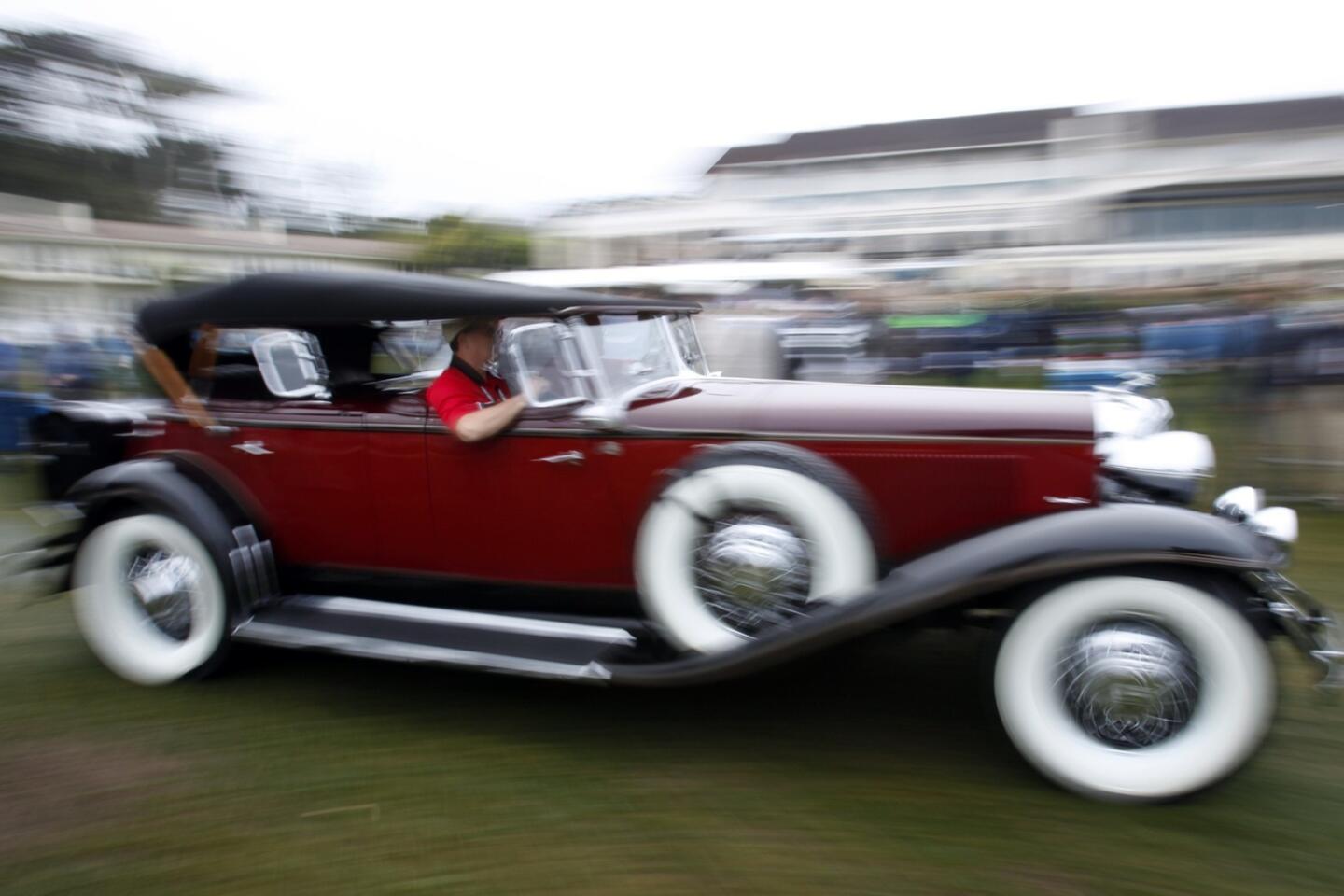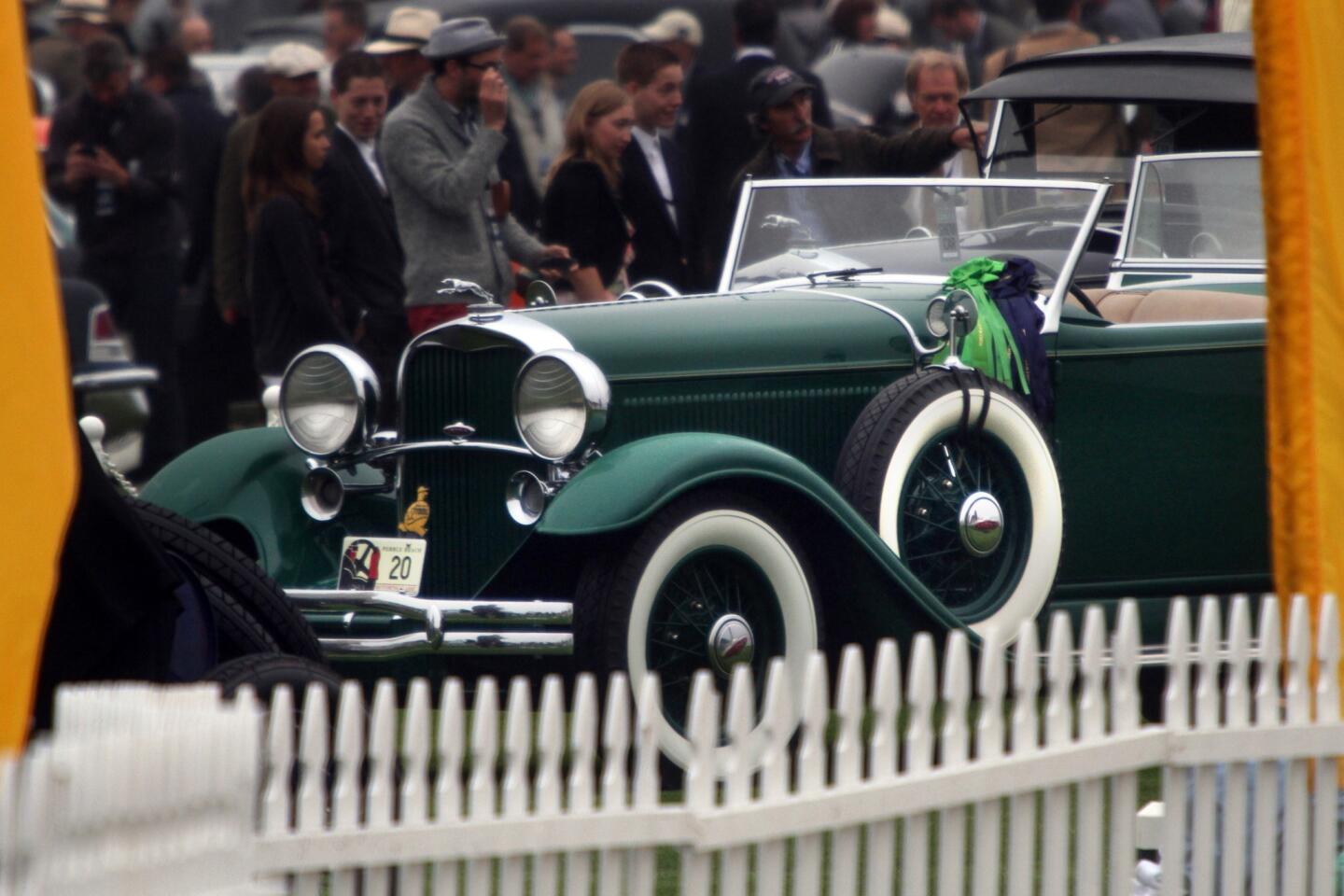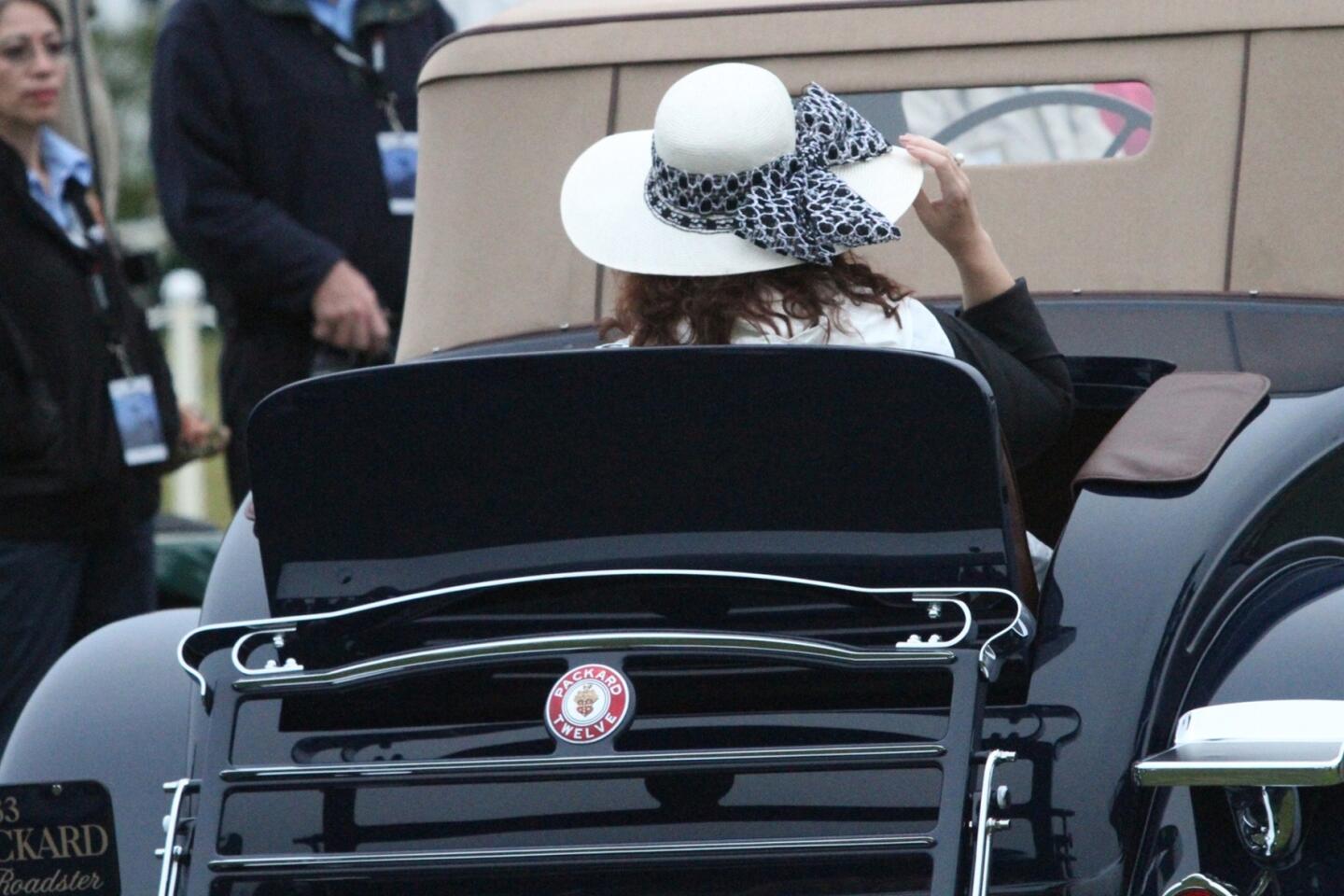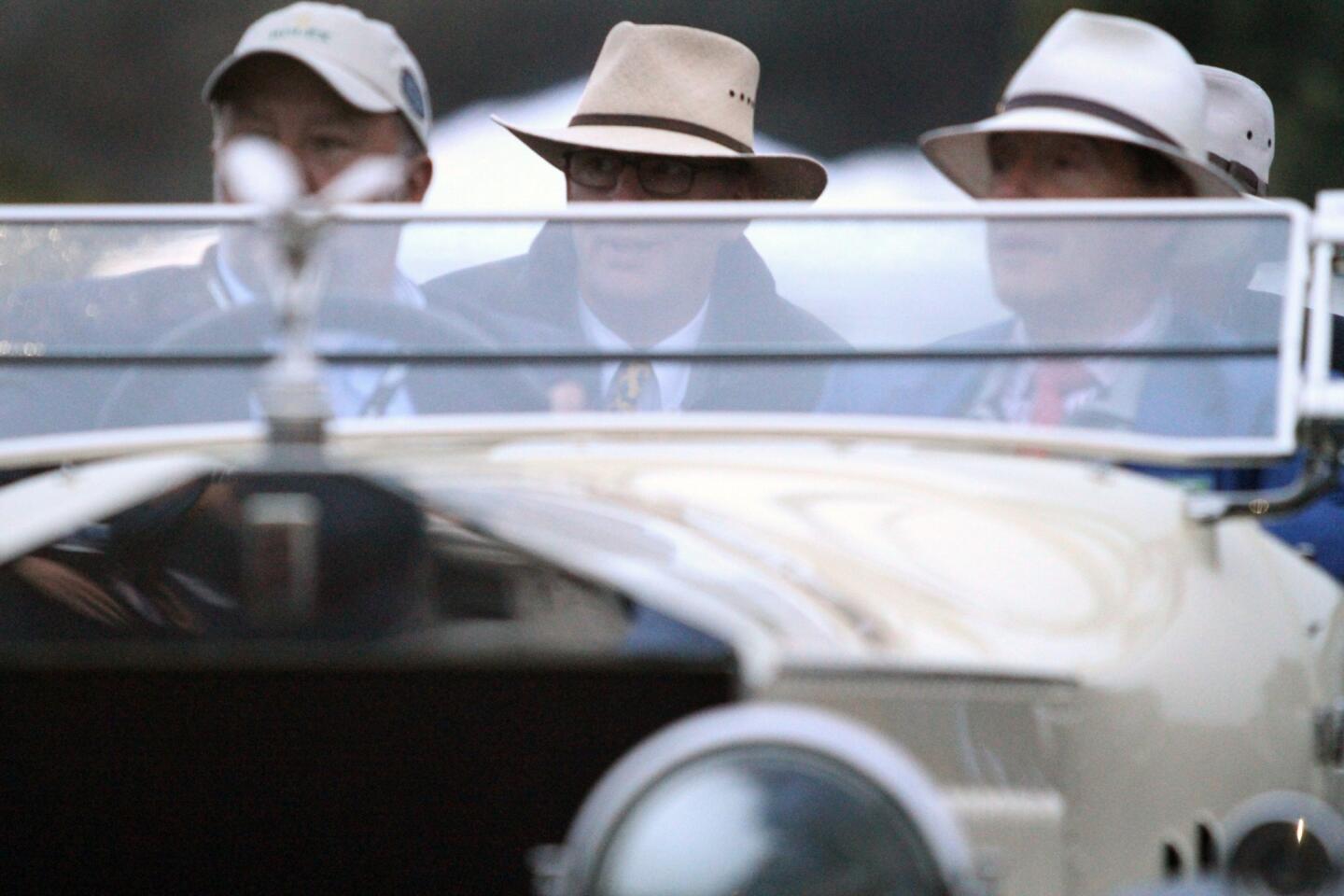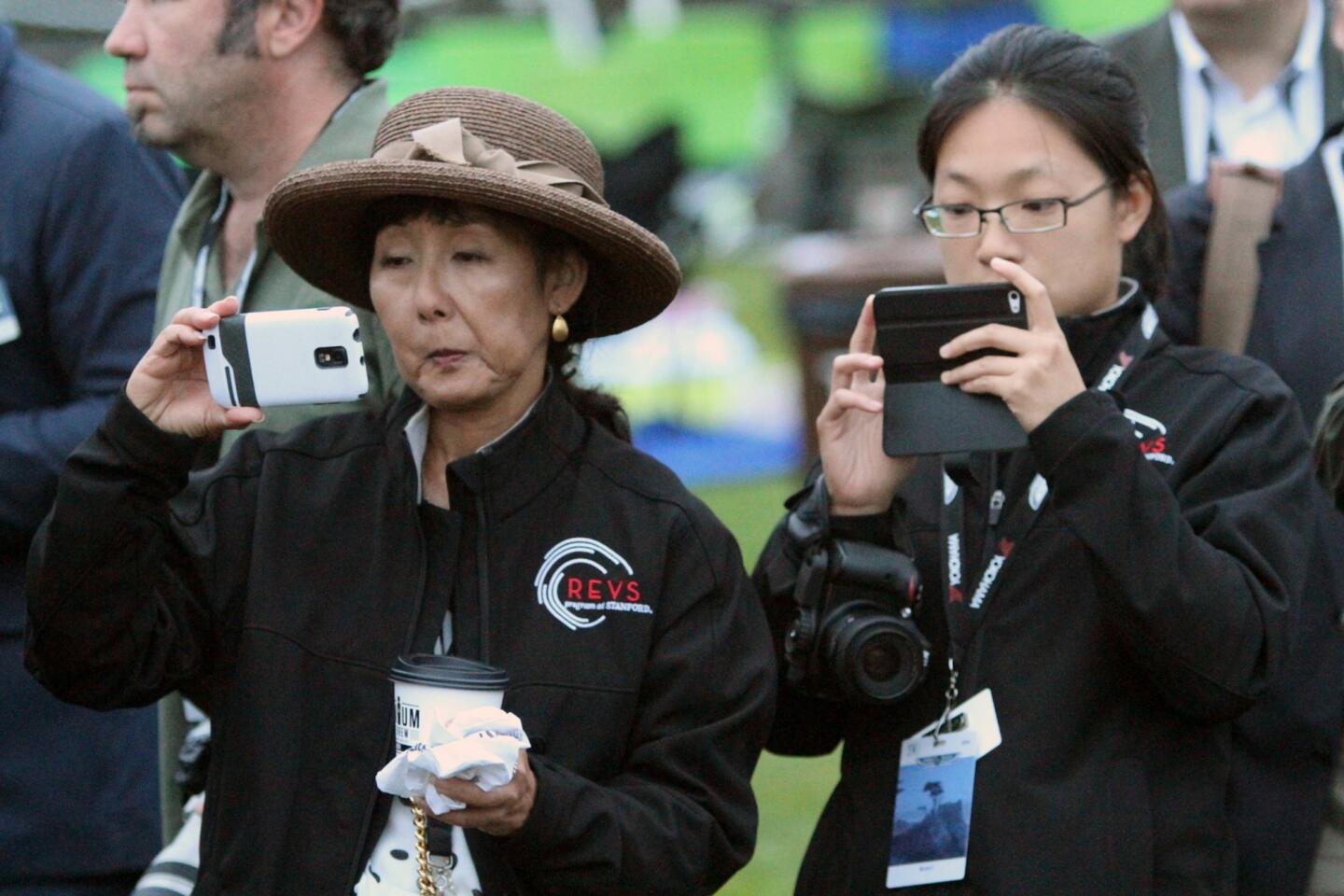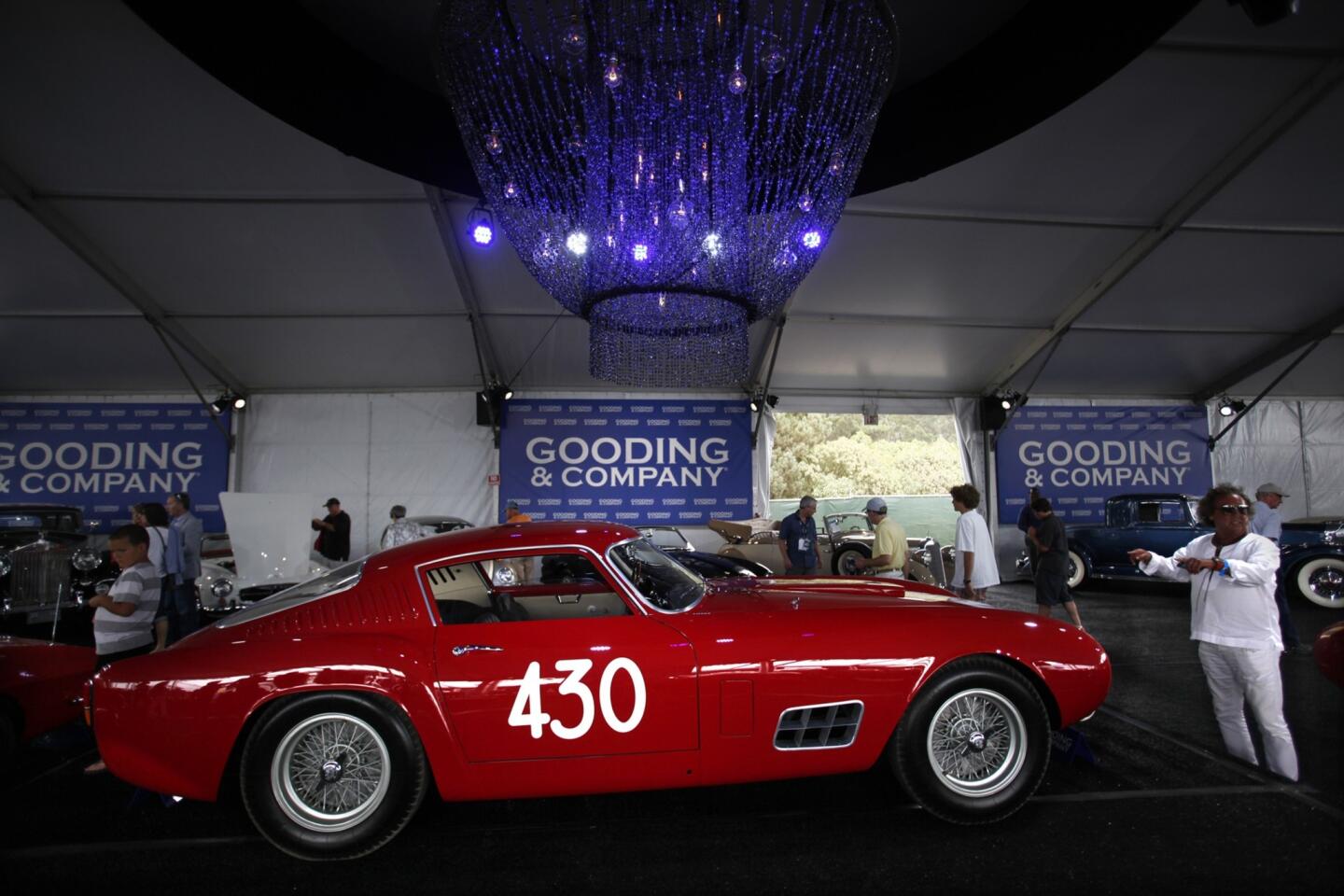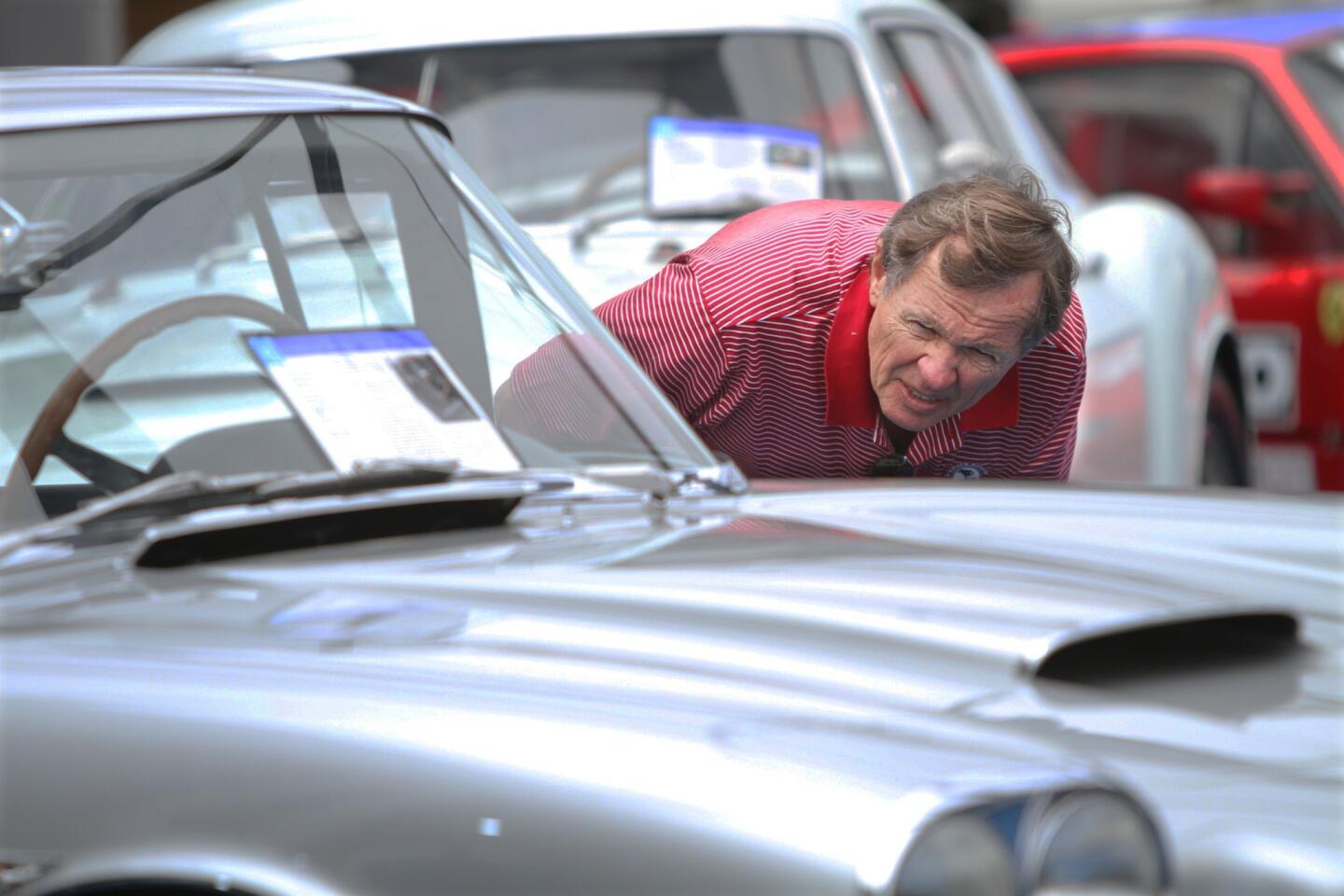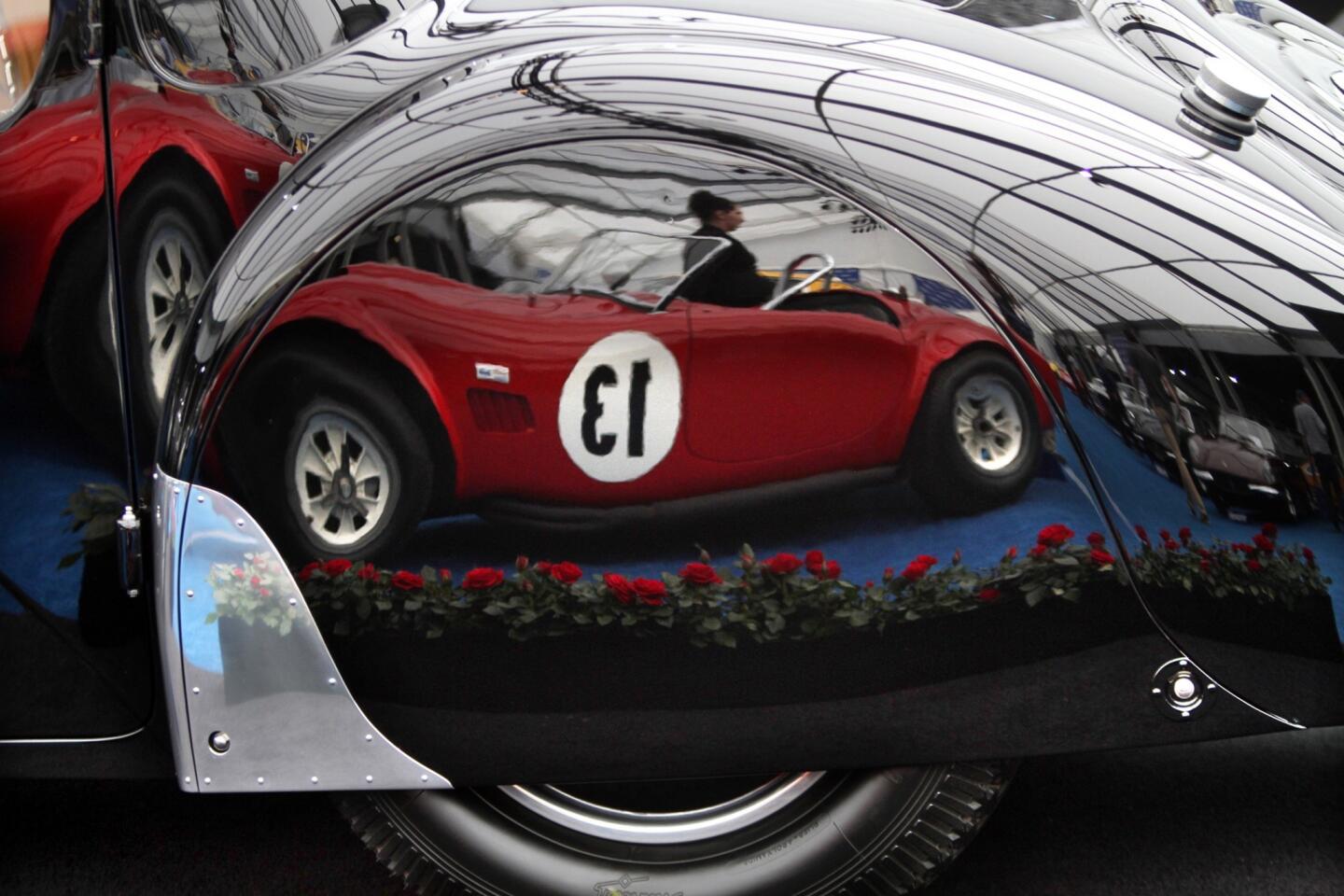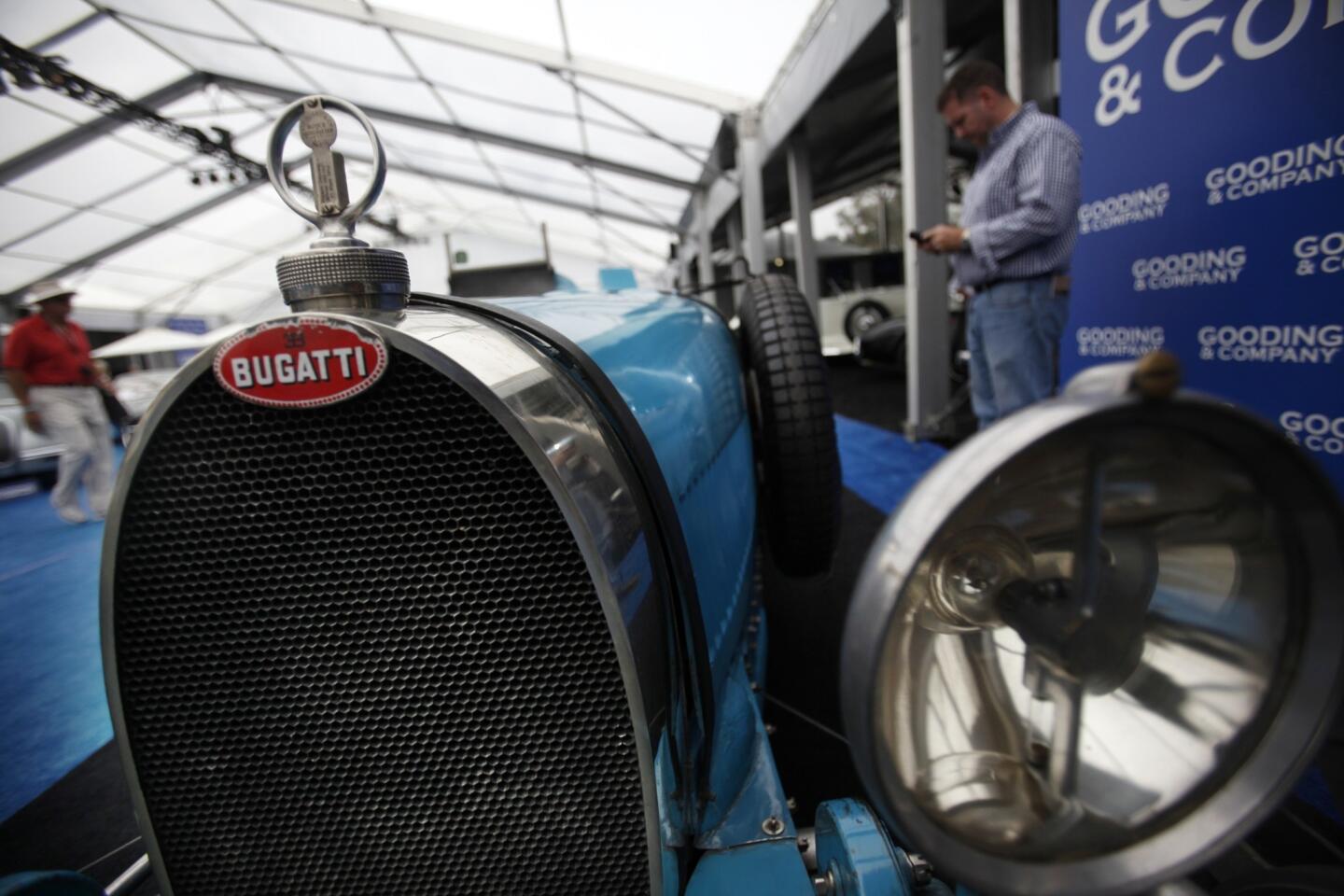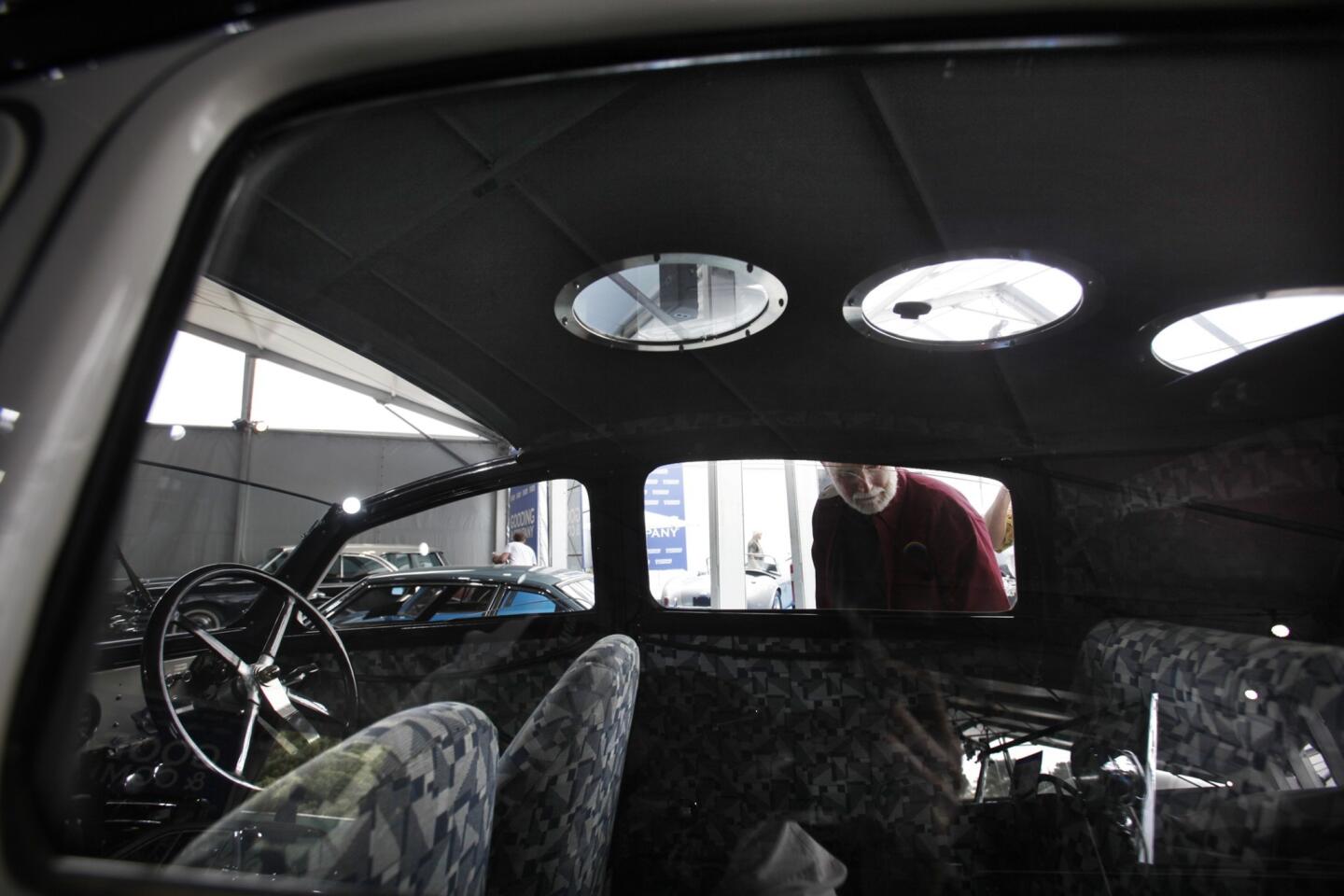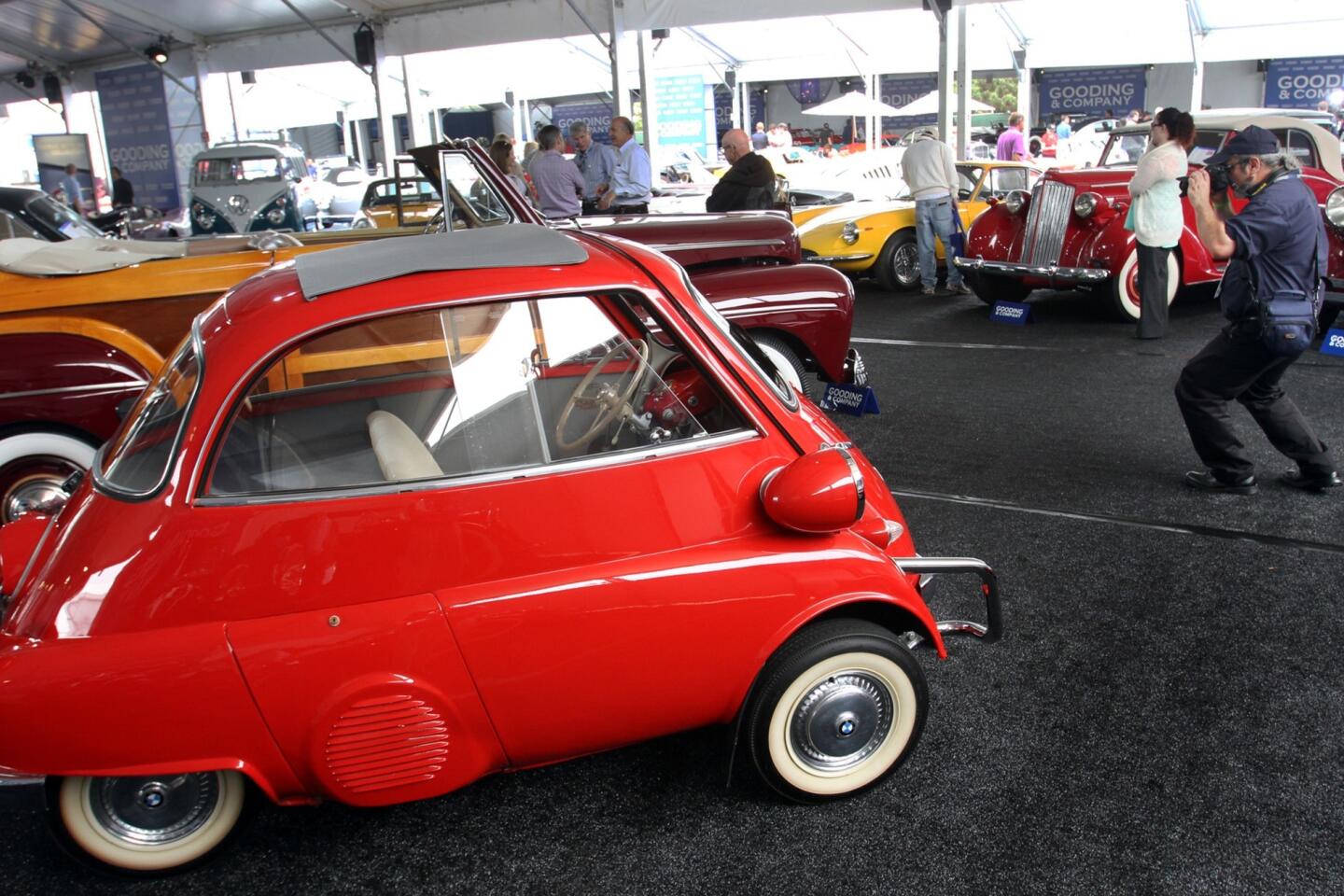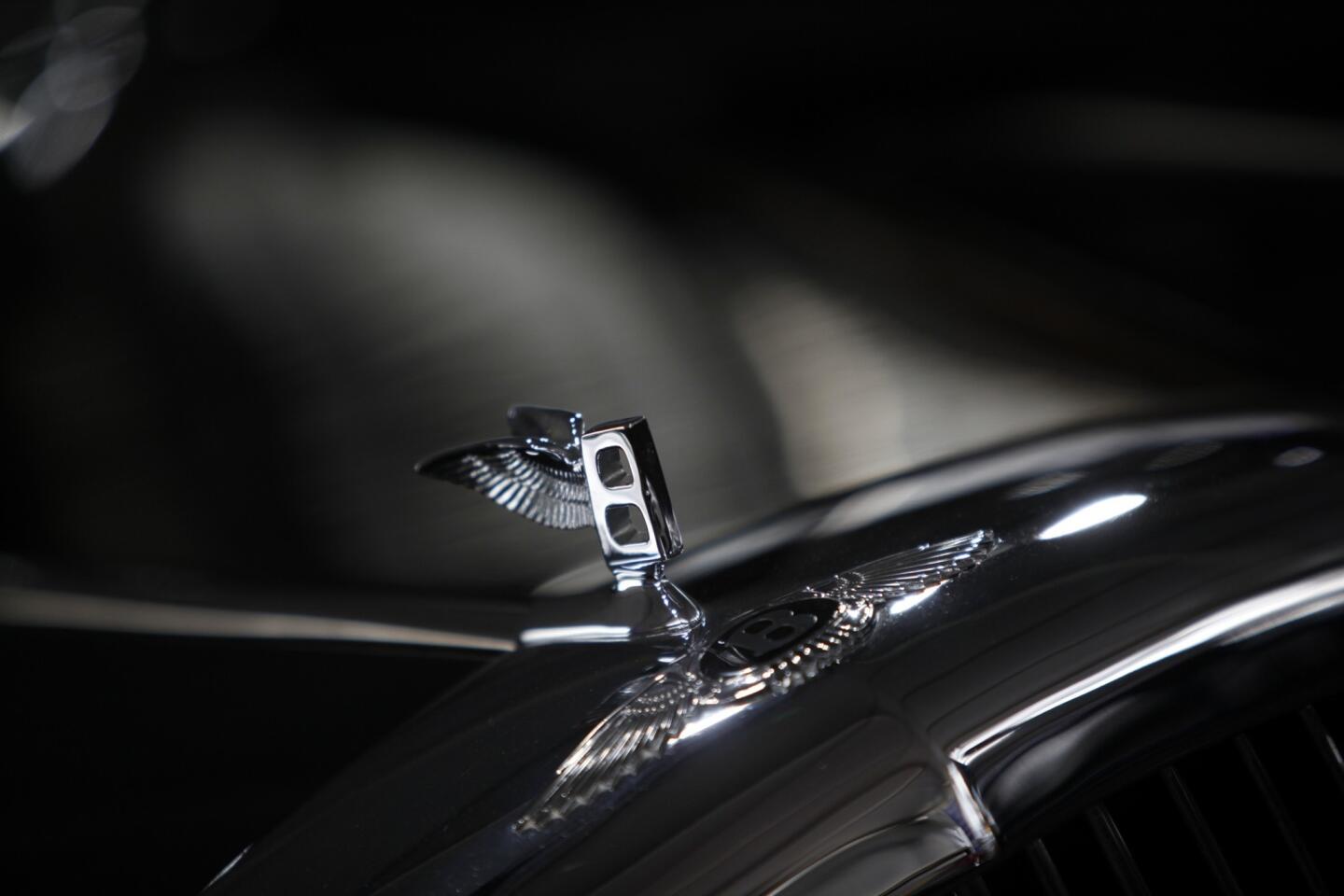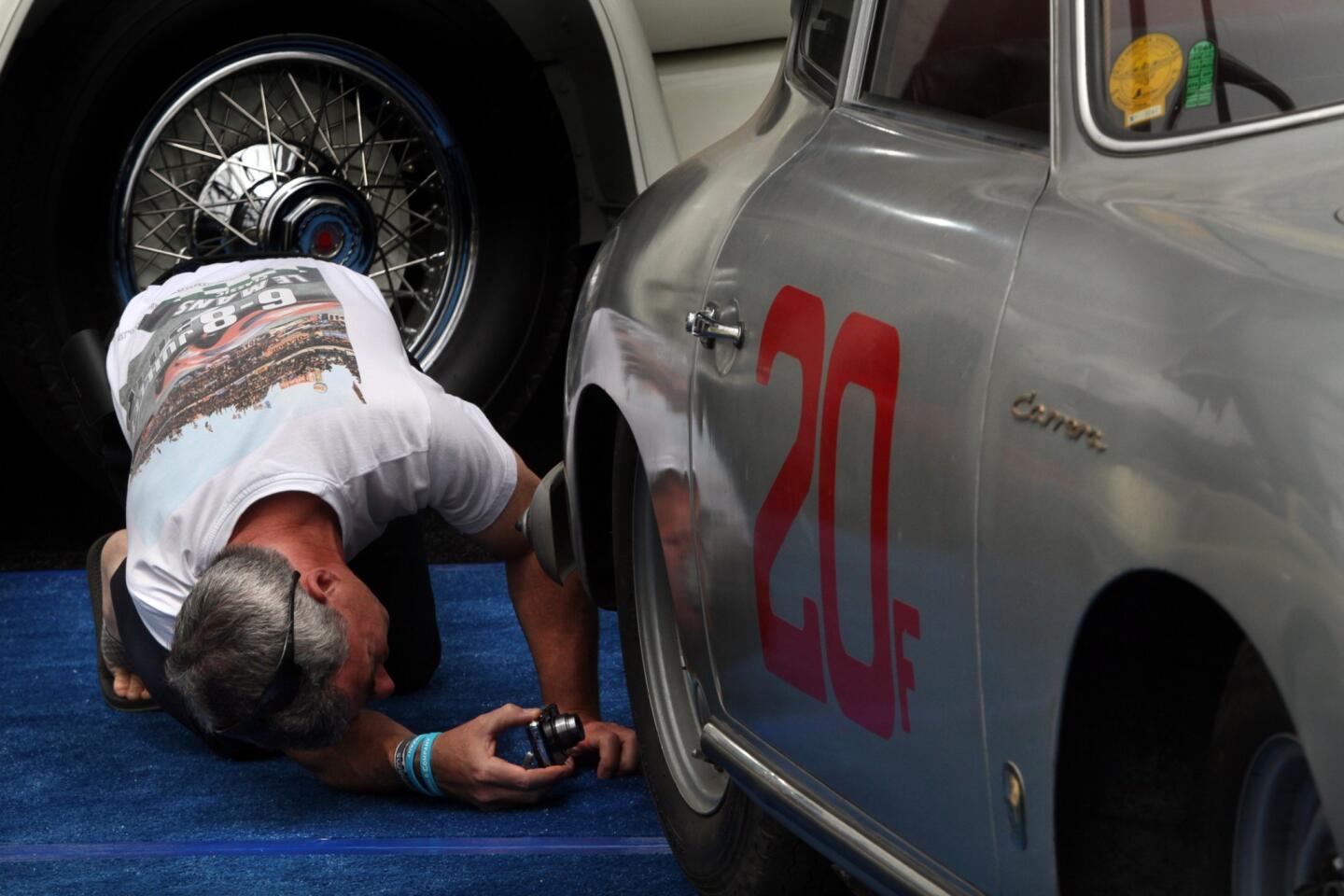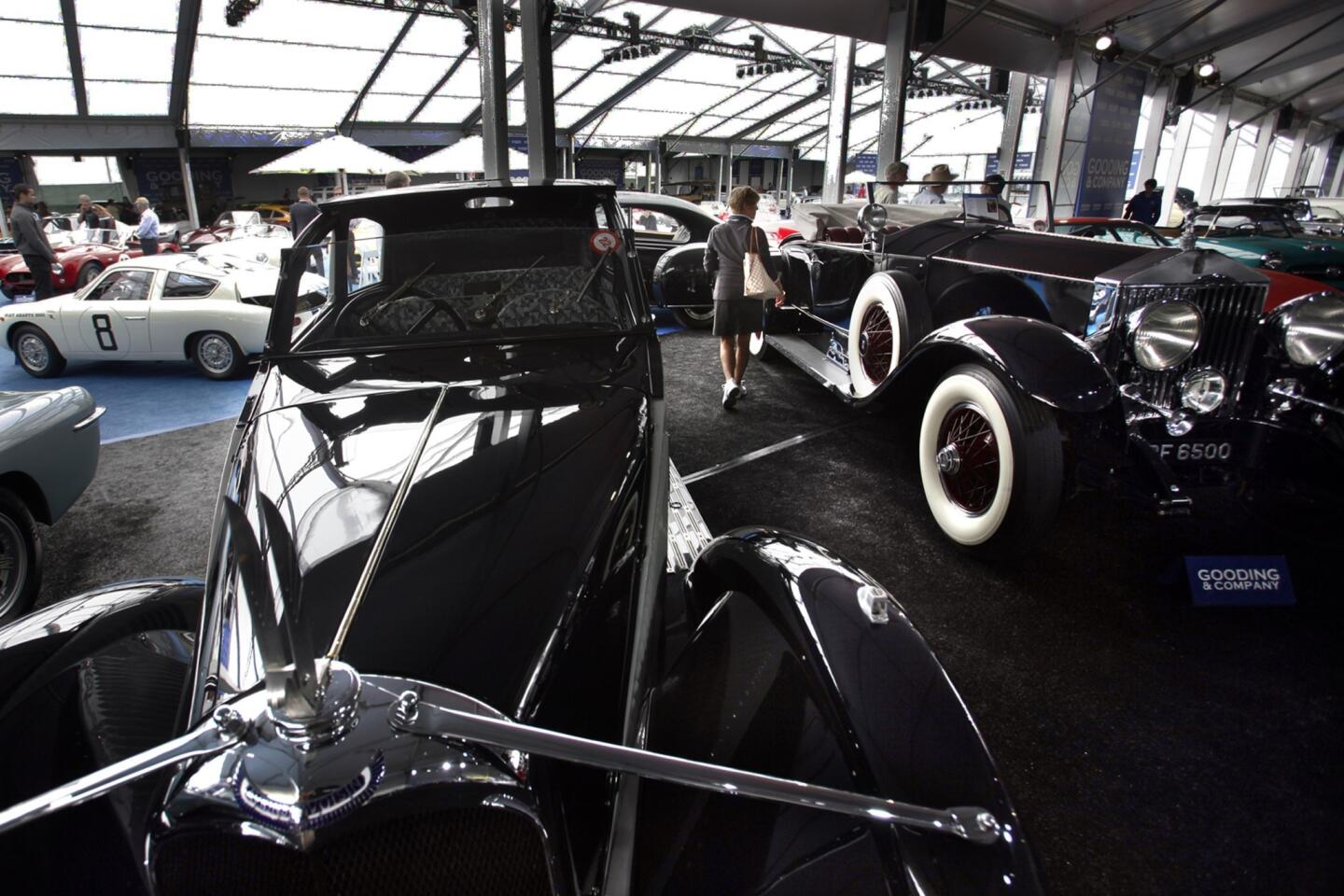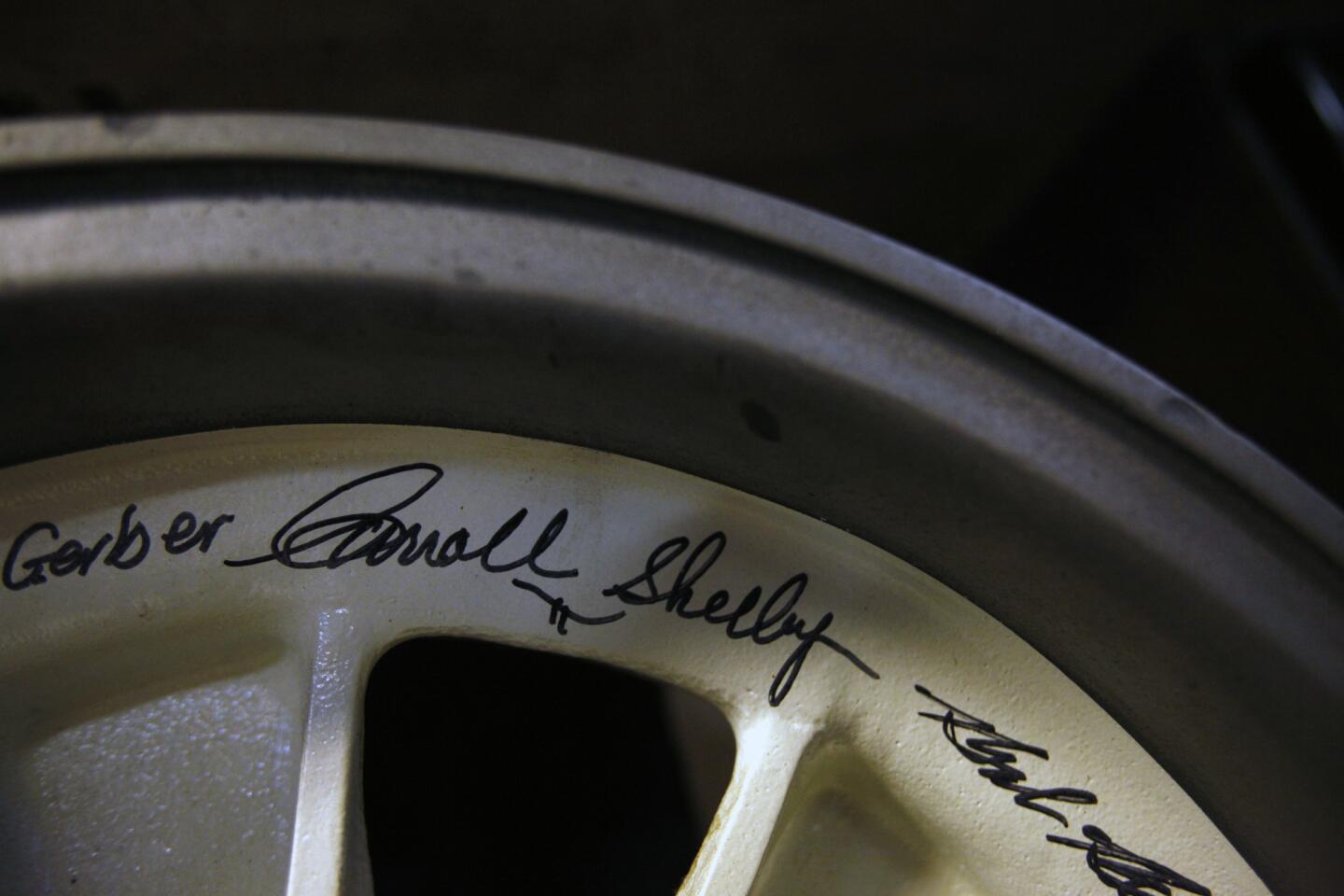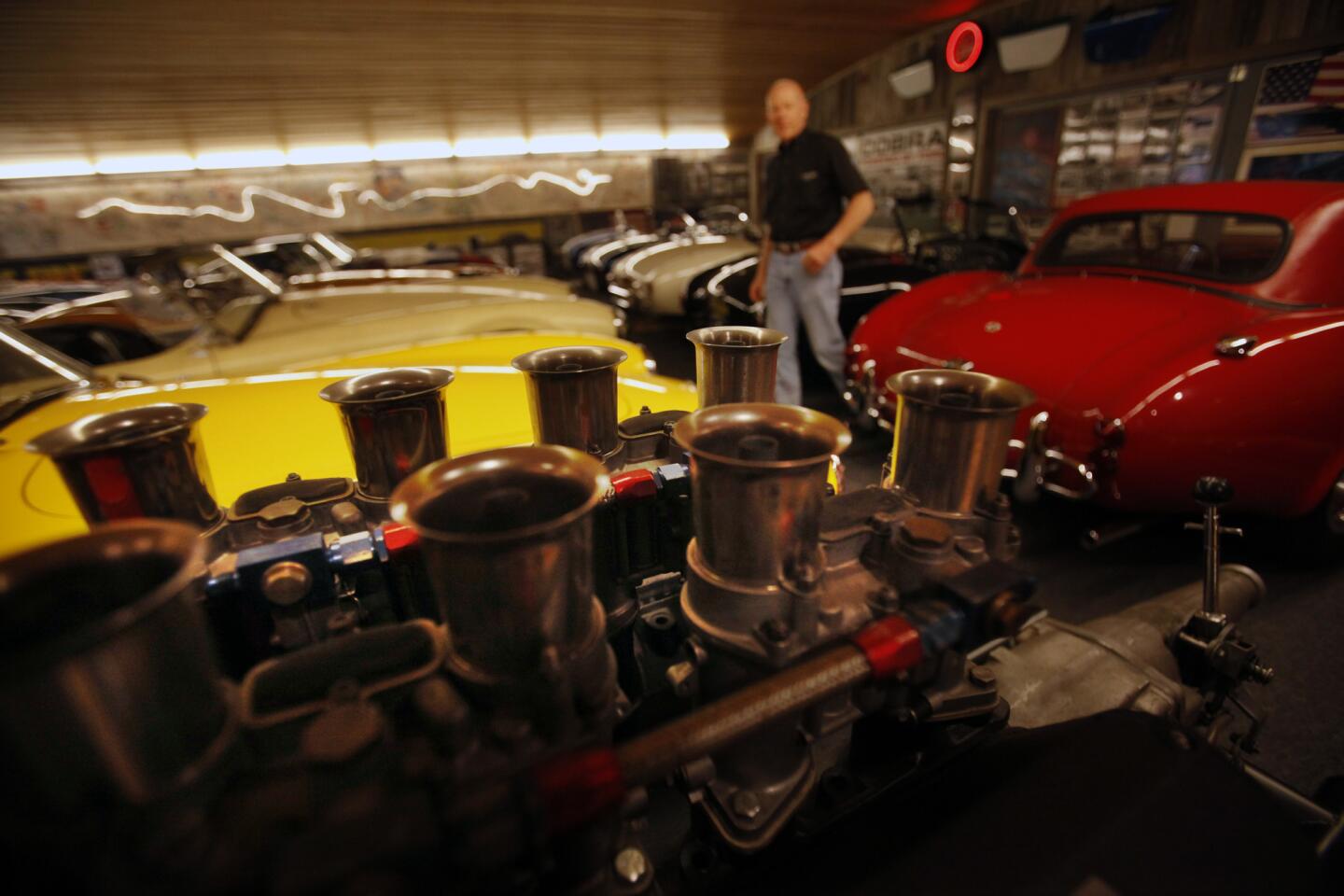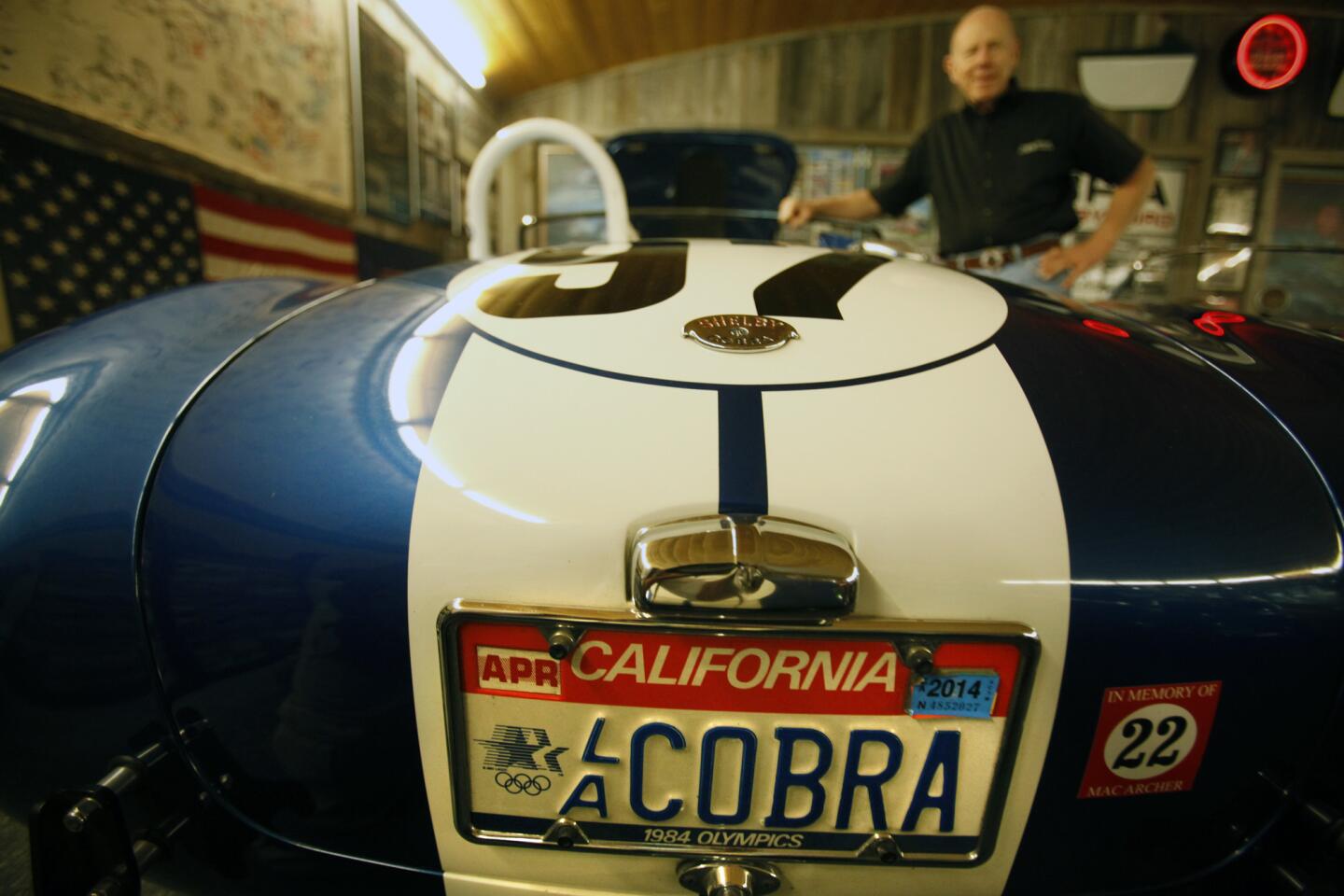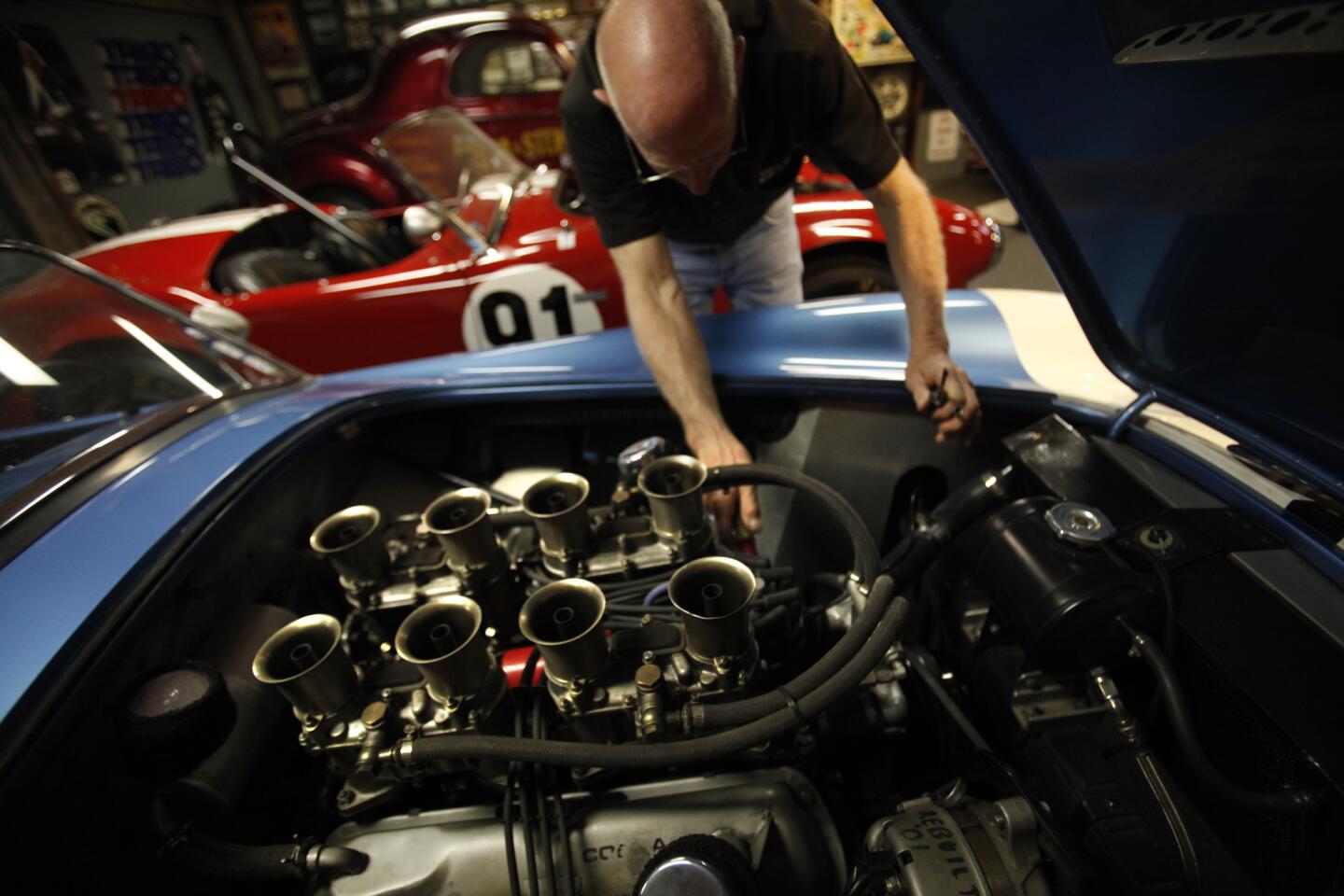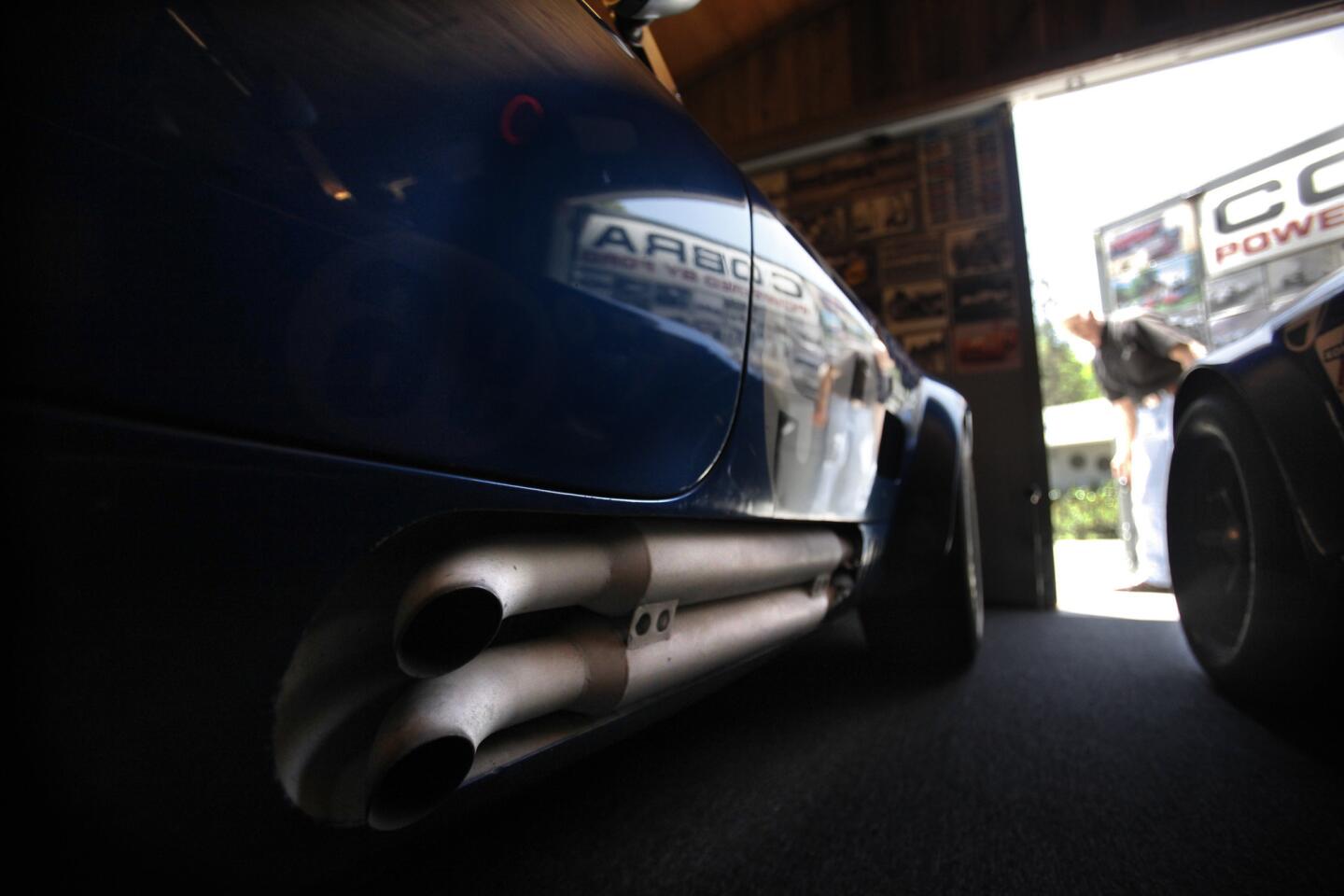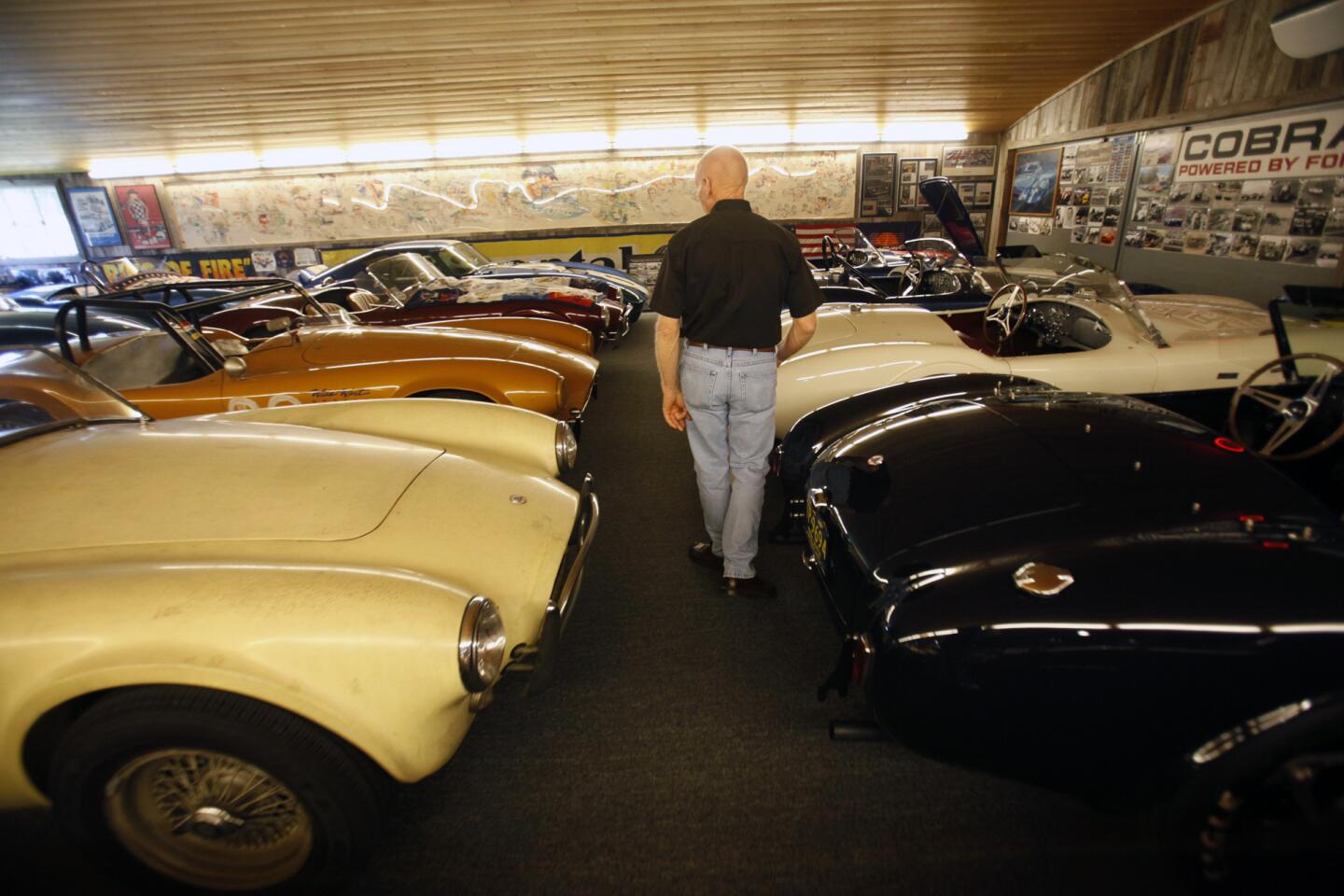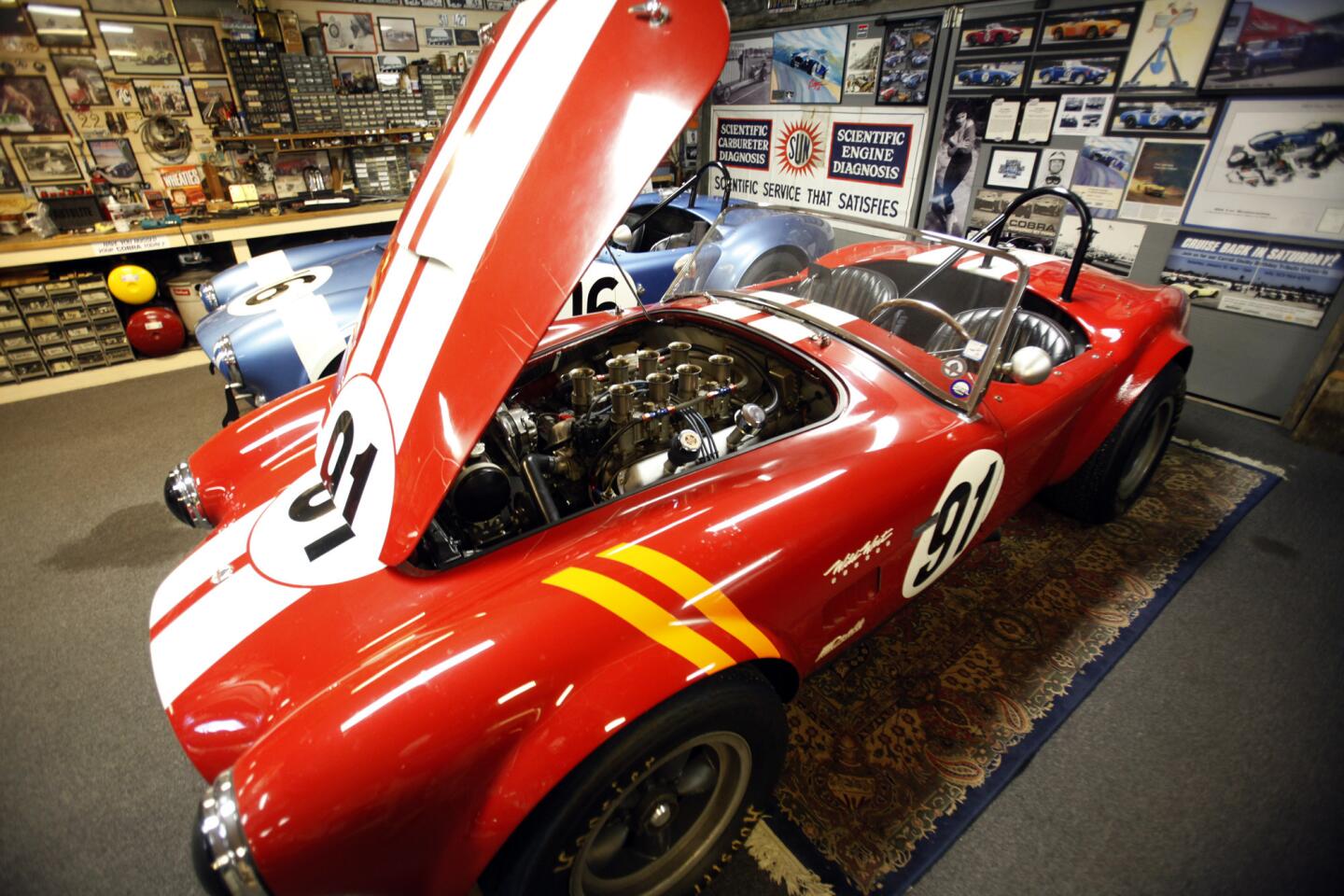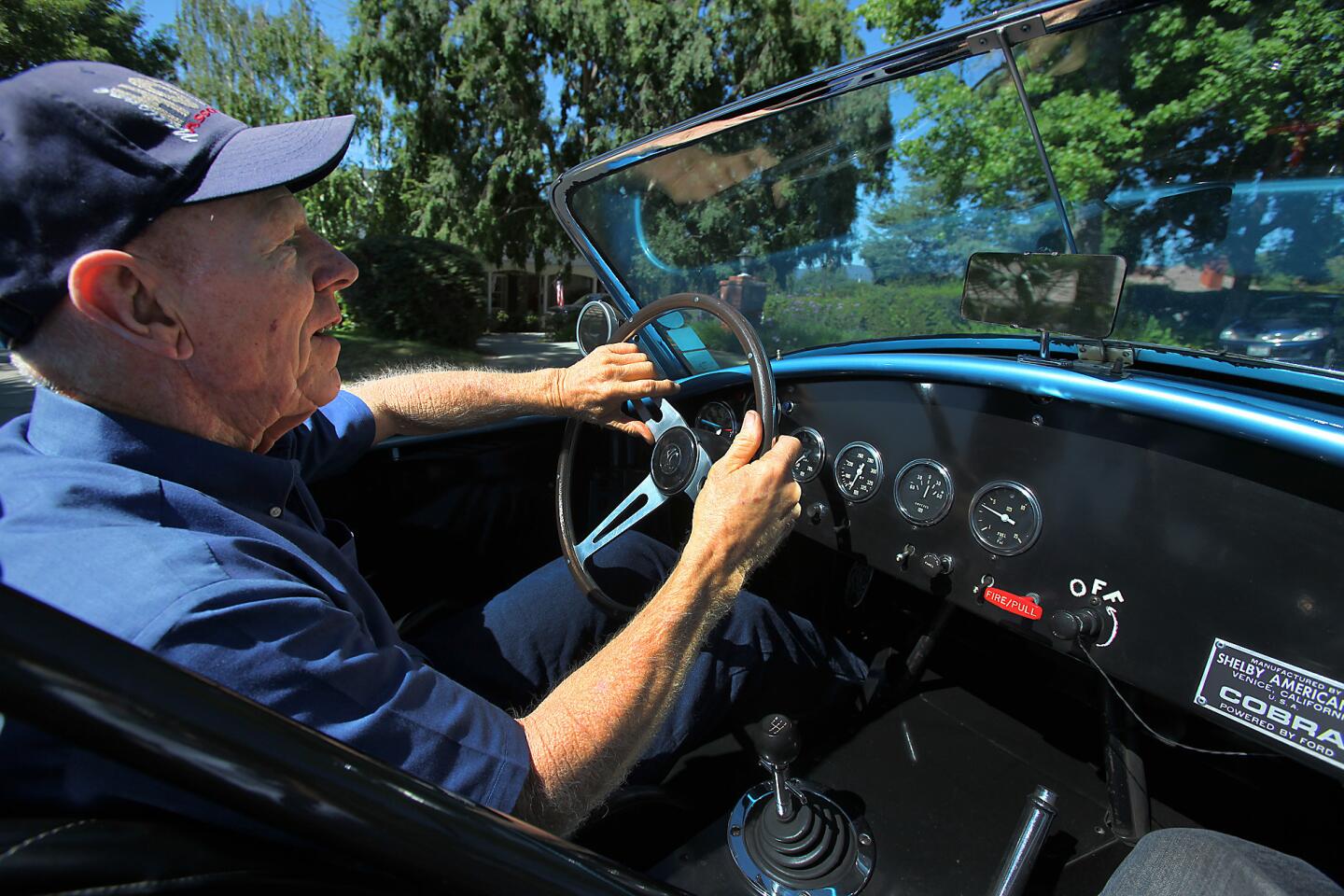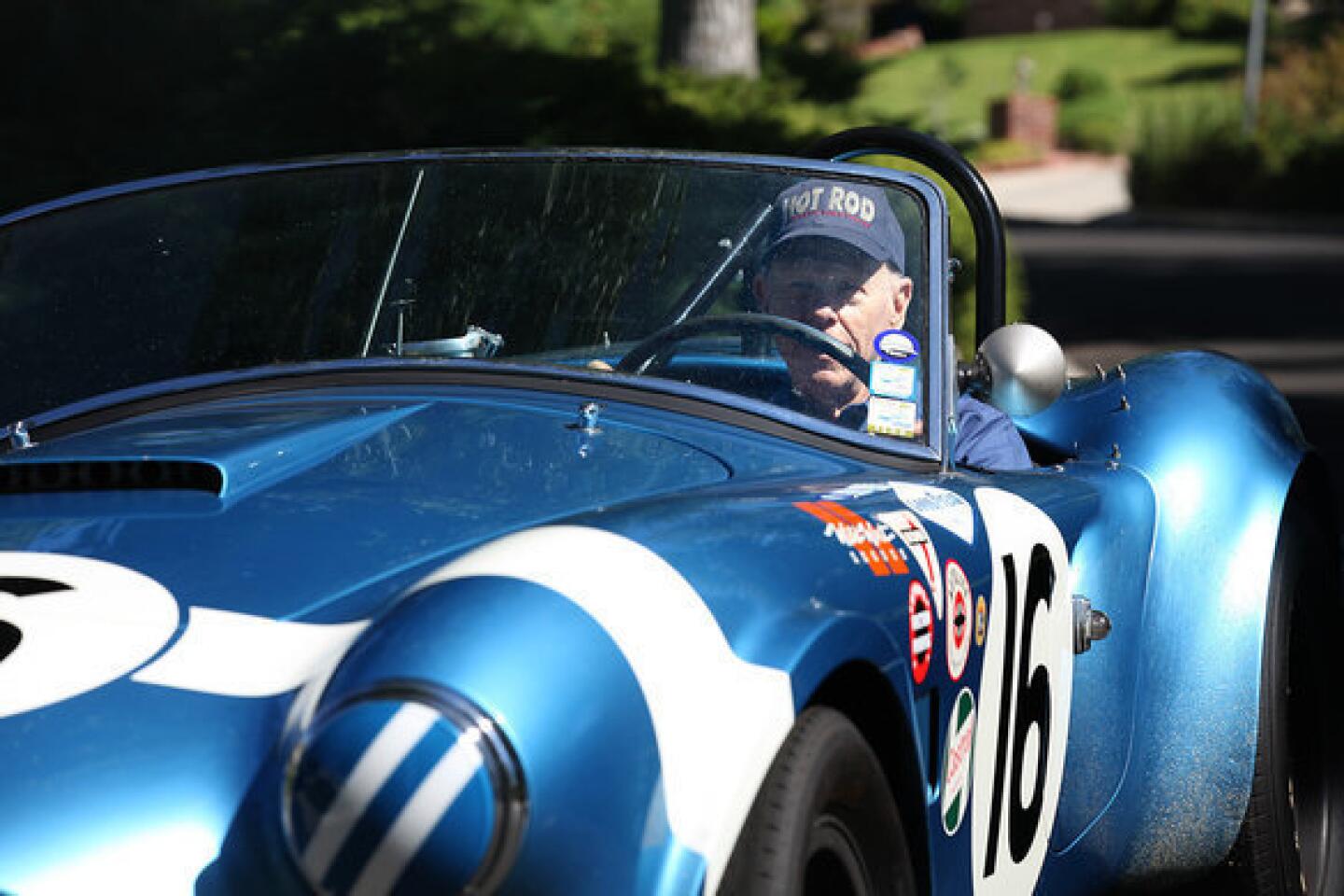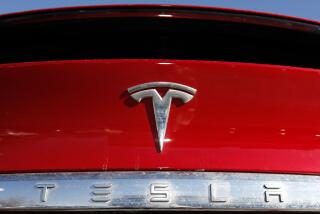Tesla reveals battery swap plan for its high-end electric cars
Tesla Motors, Inc., unveiled plans Thursday night to offer a service that would swap out depleted batteries in its luxury electric cars for fully charged packs.
Chief Executive Officer Elon Musk took the stage inside the carmaker’s design studio in Hawthorne to show off Tesla’s latest effort to make the brand’s Model S sedan a little more consumer-friendly.
A cheeky video displayed behind Musk featured a split-screen. On the left, a man went through the motions of a typical gas fill-up. On the right, a Tesla electric vehicle drove over a pit, from which its battery packs -- located in the car’s floor -- can be accessed. A timer hovered above the two sides: The battery swap took 1 minute 33 seconds, while the fill-up lasted 4:09.
The battery-swap pits will share stations with the free, 30-minute Supercharger systems Tesla debuted last October, so drivers can choose between “fast or free” -- Musk’s tag line for the evening.
Those who opt for “fast” will pay for a fully charged battery when they pull into a station to swap. Musk said the cost would be the equivalent of 15 gallons of gas in the surrounding region.
In practice, say a driver on a road trip pulls into a station, swaps out their battery for that gas-equivalent cost, and continues on their way. When they pull through the same station on the return trip, they will be able to either get the same battery they switched out -- now fully recharged -- or have an entirely new battery put in. They will have to pay again for the swap, and pay any difference between the value of their battery and the new one. Drivers who have the time can recharge their battery
In theory, the swap solves a major hurdle for marketing electric vehicles: range anxiety. Drivers won’t be quite as restricted in the number of miles between charges. Tesla models equipped with 85-kWh (kilowatt hours) batteries can drive an estimated 265 miles, according to the Environmental Protection Agency, while those carrying 60-kWh batteries go about 208 miles. And the nuisance of waiting 30 minutes or more for a recharge will disappear for drivers who take advantage of the battery swap.
“We need to address the reasons people aren’t buying electric cars,” Musk said after the demonstration. “People need to feel they have the same level of freedom that they have with gasoline cars.”
This isn’t the first time the electric vehicle market has embraced battery swapping. Electric car services provider Better Place, Inc., premiered the method during a demonstration in Japan back in 2009. The technology didn’t catch on.
Automakers refused to make swap-compatible cars, and the company couldn’t keep costs low enough for consumers. Better Place filed for bankruptcy earlier this year, having lost $459 million and racked up a mere $6.9 million in sales for all of 2012.
Musk acknowledged the battery swap was not a novel idea. “Your average toy is capable of doing this,” he joked.
Of Better Place’s missteps, he said: “They were better at marketing than they were at engineering.”
Jack Nerad, an analyst at auto information company Kelley Blue Book, still had some concerns when news broke earlier of Tesla’s plans. Nerad pointed out every car would have to be designed around the same size and configuration of battery pack, which would be “problematic for hotly competitive car manufacturers” and an obstacle for future innovation.
Further, Nerad said, the cost of installing battery-swap stations may limit their convenience. “It requires a substantial investment in facilities if the battery-replacement centers are to be situated in convenient locations,” he said.
Tesla’s battery swap stations will cost about $500,000 each to build. Musk said the automaker planned to start with the busiest regional traffic corridors, including Los Angeles to San Francisco and Boston to New York.
ALSO:Bosch unveils wireless car charging stations
Seat latch problem prompts first Tesla Motors Model S recall
Fuel cell expert says Tesla is promising more than it can deliver
Twitter: @c_s_green
